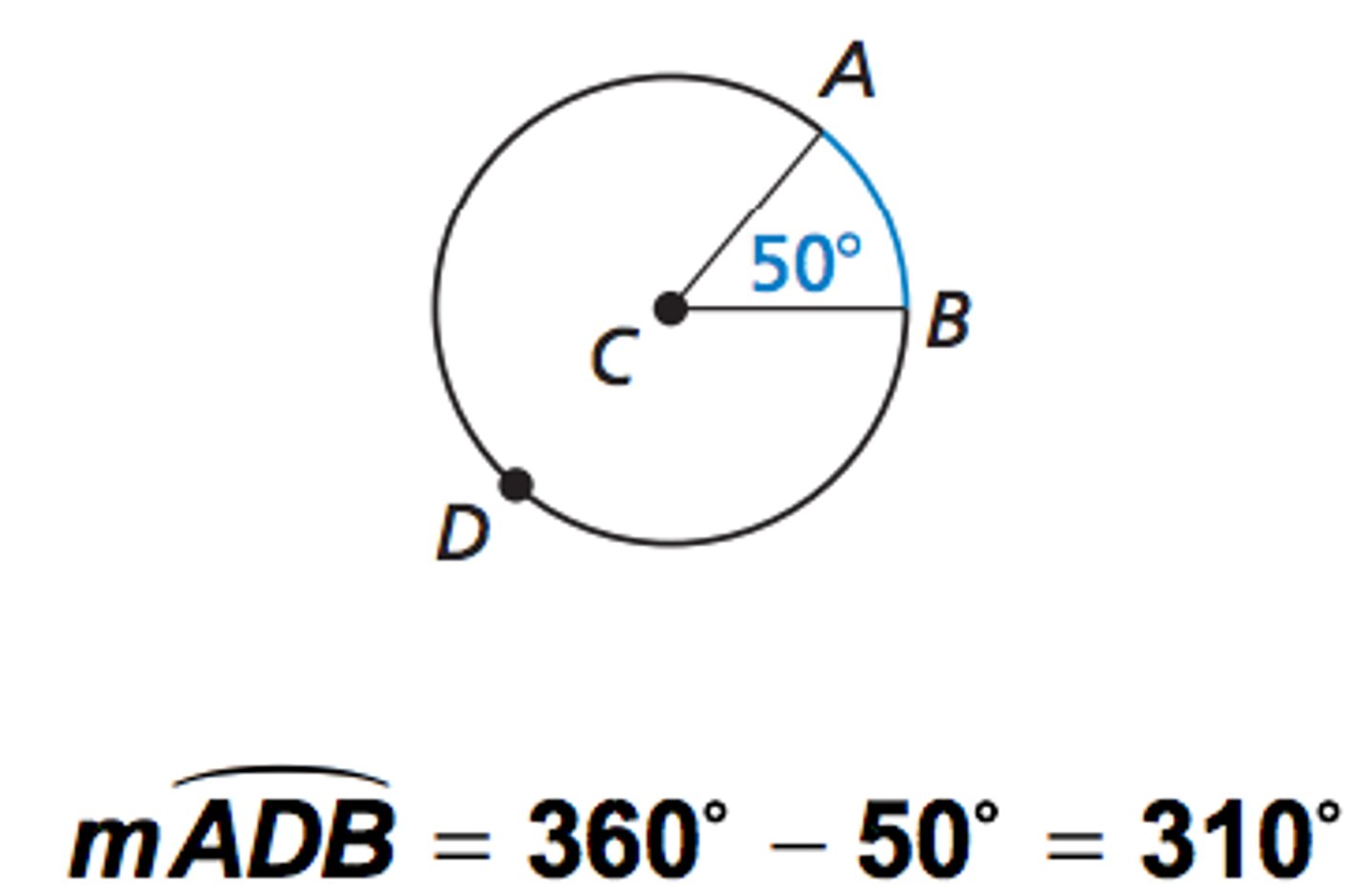Geometry Finals - Formulas, Theorems, Postulates, Corollaries, Vocabulary
1/179
There's no tags or description
Looks like no tags are added yet.
Name | Mastery | Learn | Test | Matching | Spaced |
|---|
No study sessions yet.
180 Terms
Perpendicular Bisector Theorem
In a plane, if a point lies on the perpendicular bisector of a segment, then it is equidistant from the endpoints of the segment.

Converse of Perpendicular Bisector Theorem
In a plane, if a point is equidistant from the endpoints of a segment, then it lies on the perpendicular bisector of the segment.
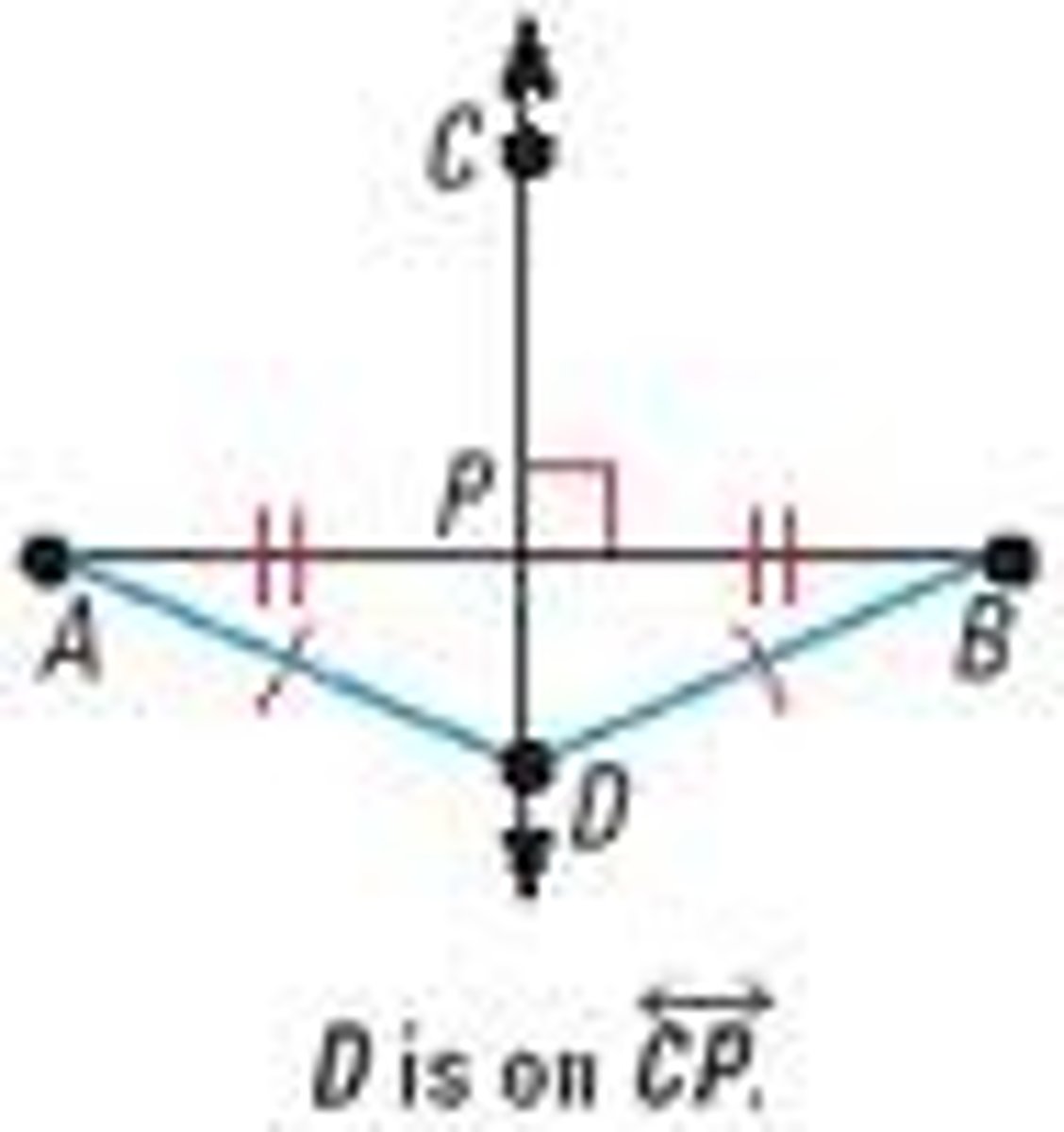
Angle Bisector Theorem
If a point lies on the bisector of an angle, then it is equidistant from the two sides of the angle.

Converse of the Angle Bisector Theorem
If a point is in the interior of an angle and is equidistant from the two sides of the angle, then it lies on the bisector of the angle.
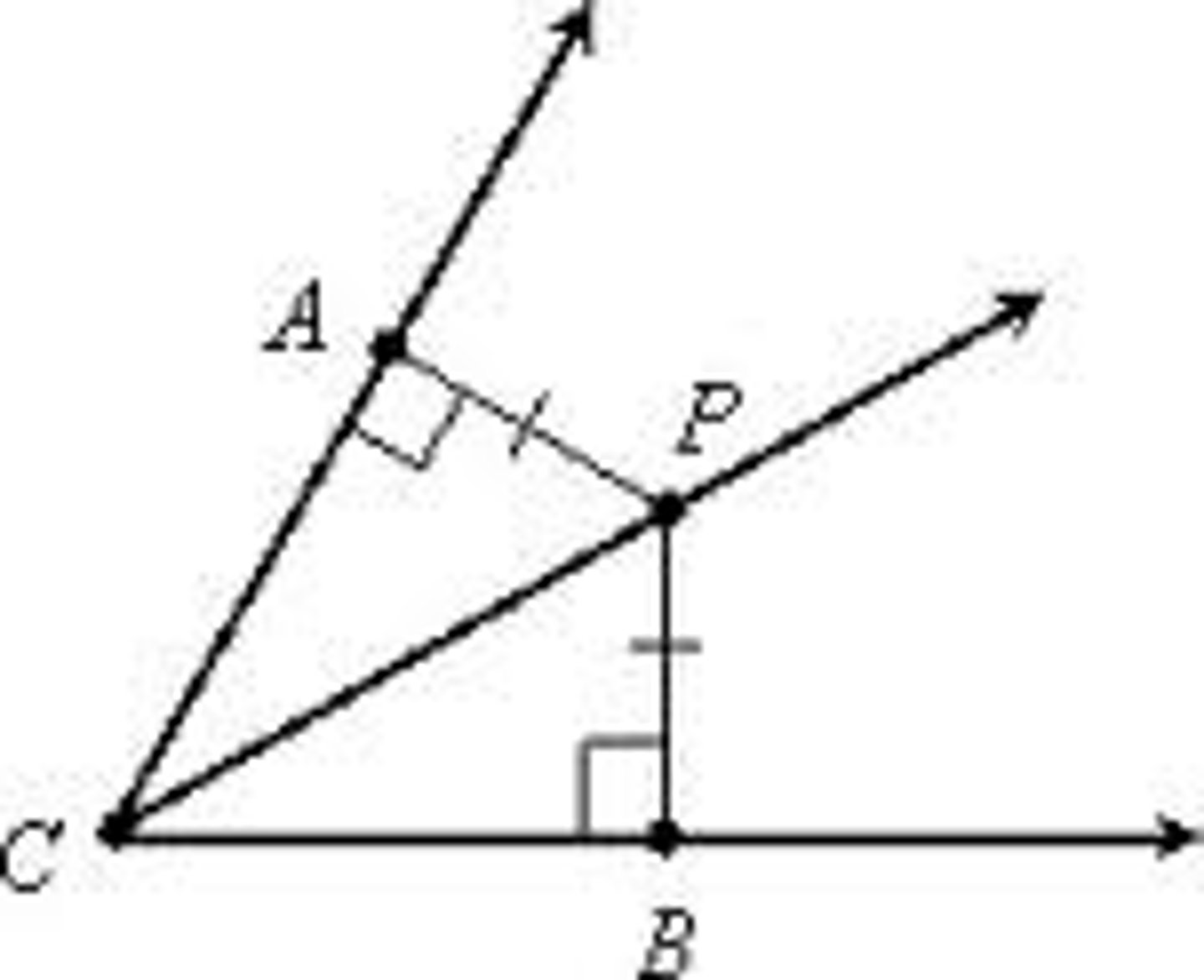
Circumcenter Theorem
The circumcenter of a triangle is equidistant from the vertices of the triangle.
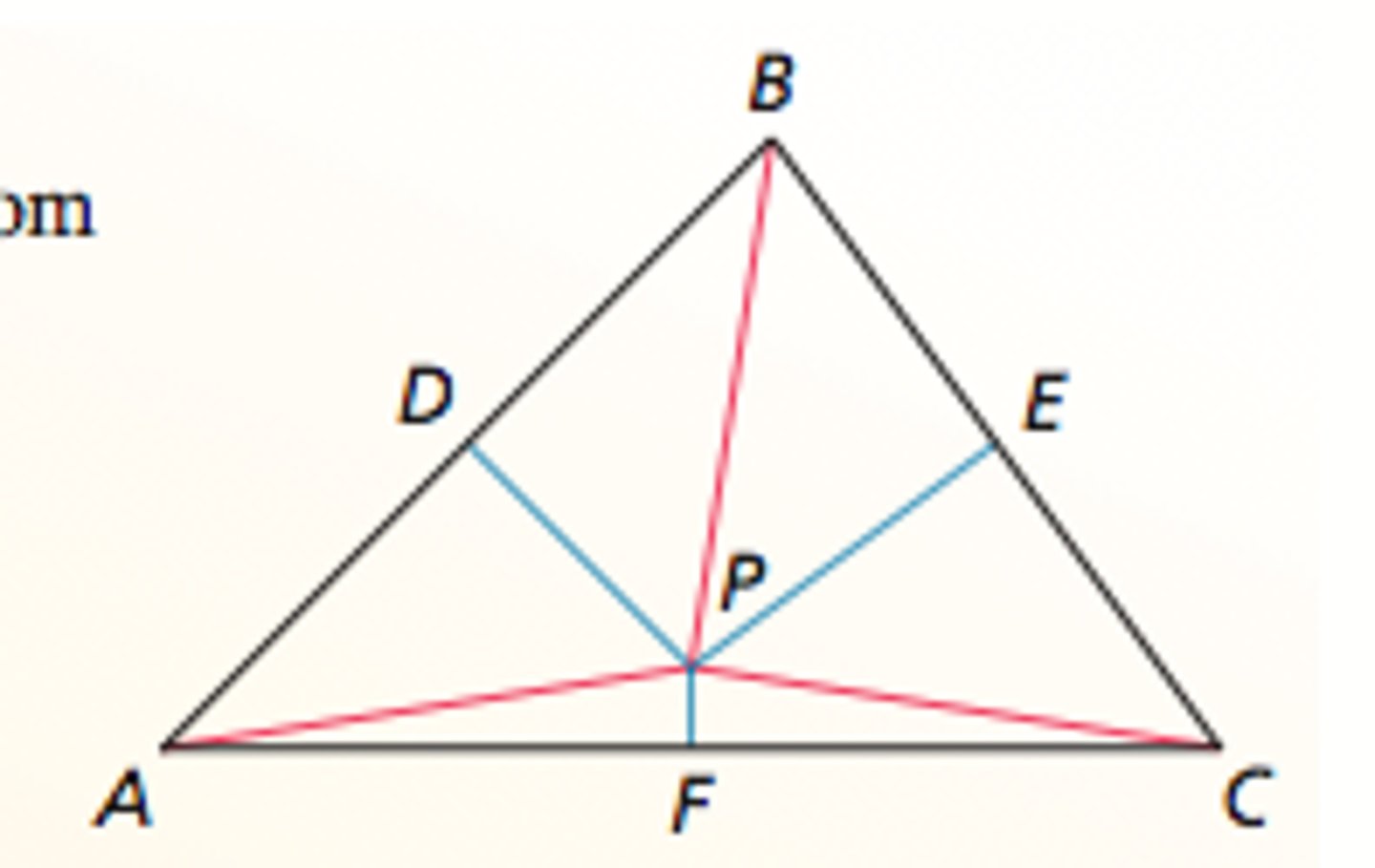
Circumcenter Placement

Incenter Theorem
The incenter of a triangle is equidistant from the sides of the triangle.
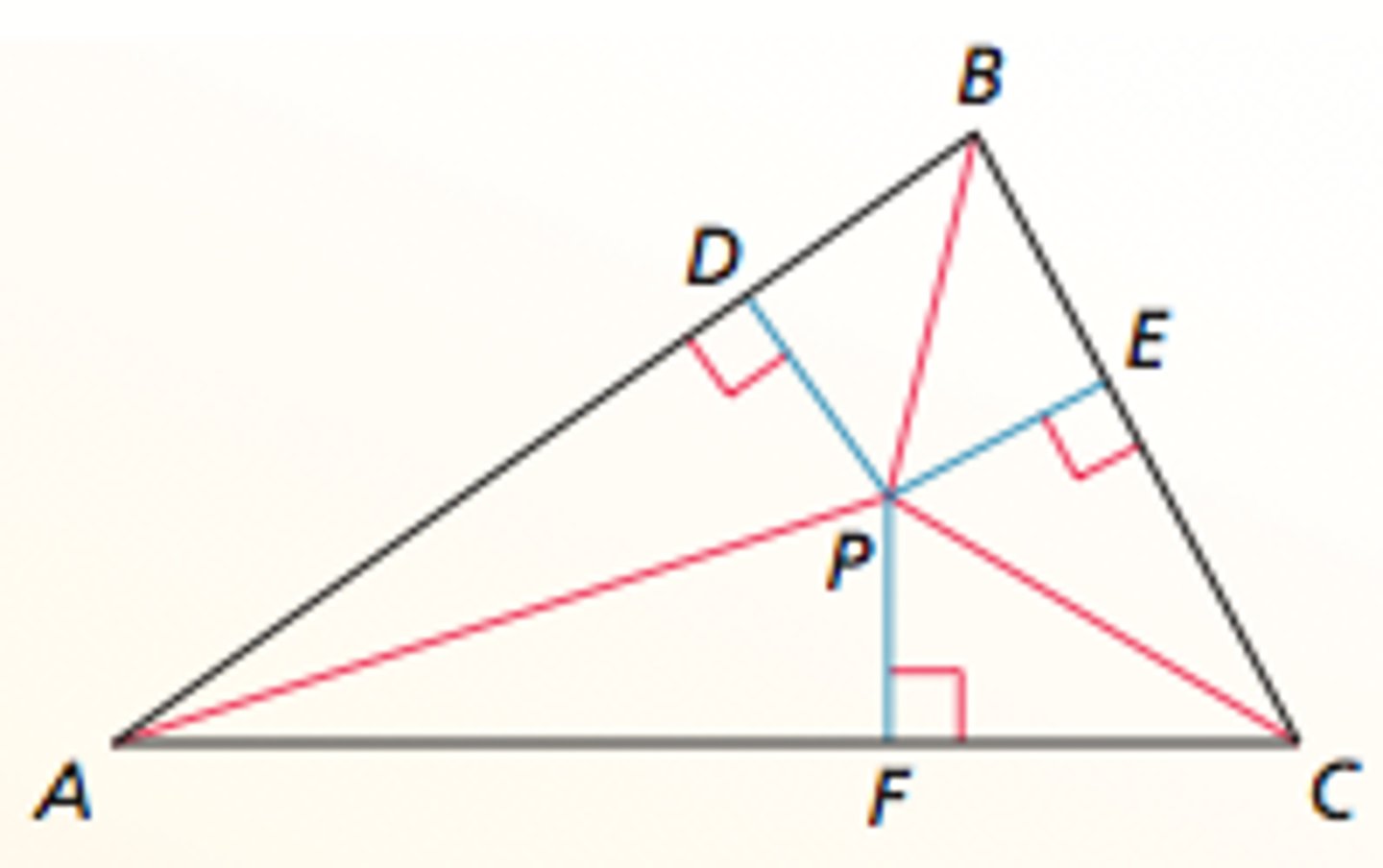
Centroid Theorem
The centroid of a triangle is two-thirds of the distance from each vertex to the midpoint of the opposite side.
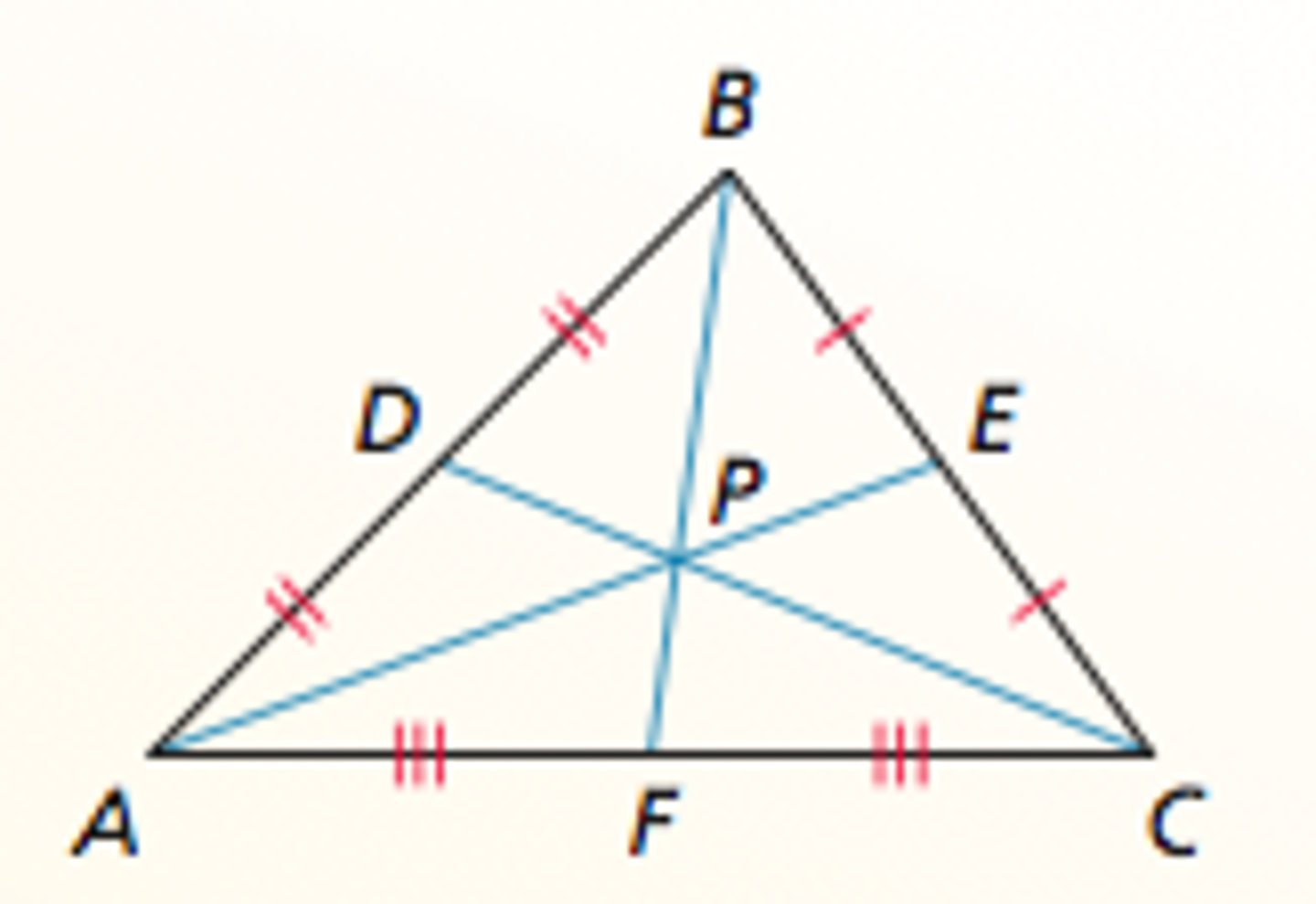
Orthocenter
The lines containing the altitudes of a triangle are concurrent. This point of concurrency is the orthocenter of the triangle.
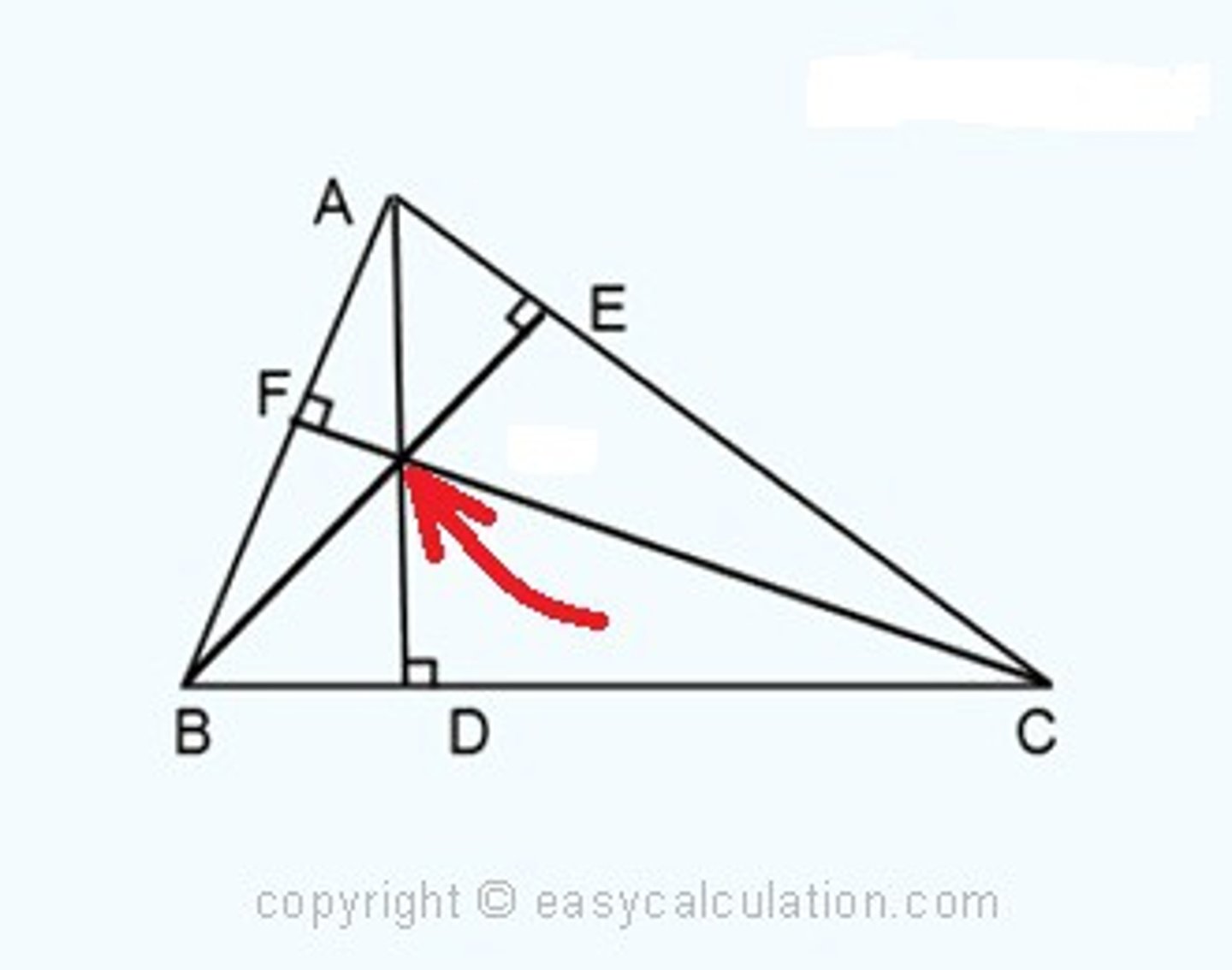
Orthocenter Placement

Segments, Lines, Rays, and Points in Triangles

Triangle Midsegment Theorem
The segment connecting the midpoints of two sides of a triangle is parallel to the third side and is half as long as that side.
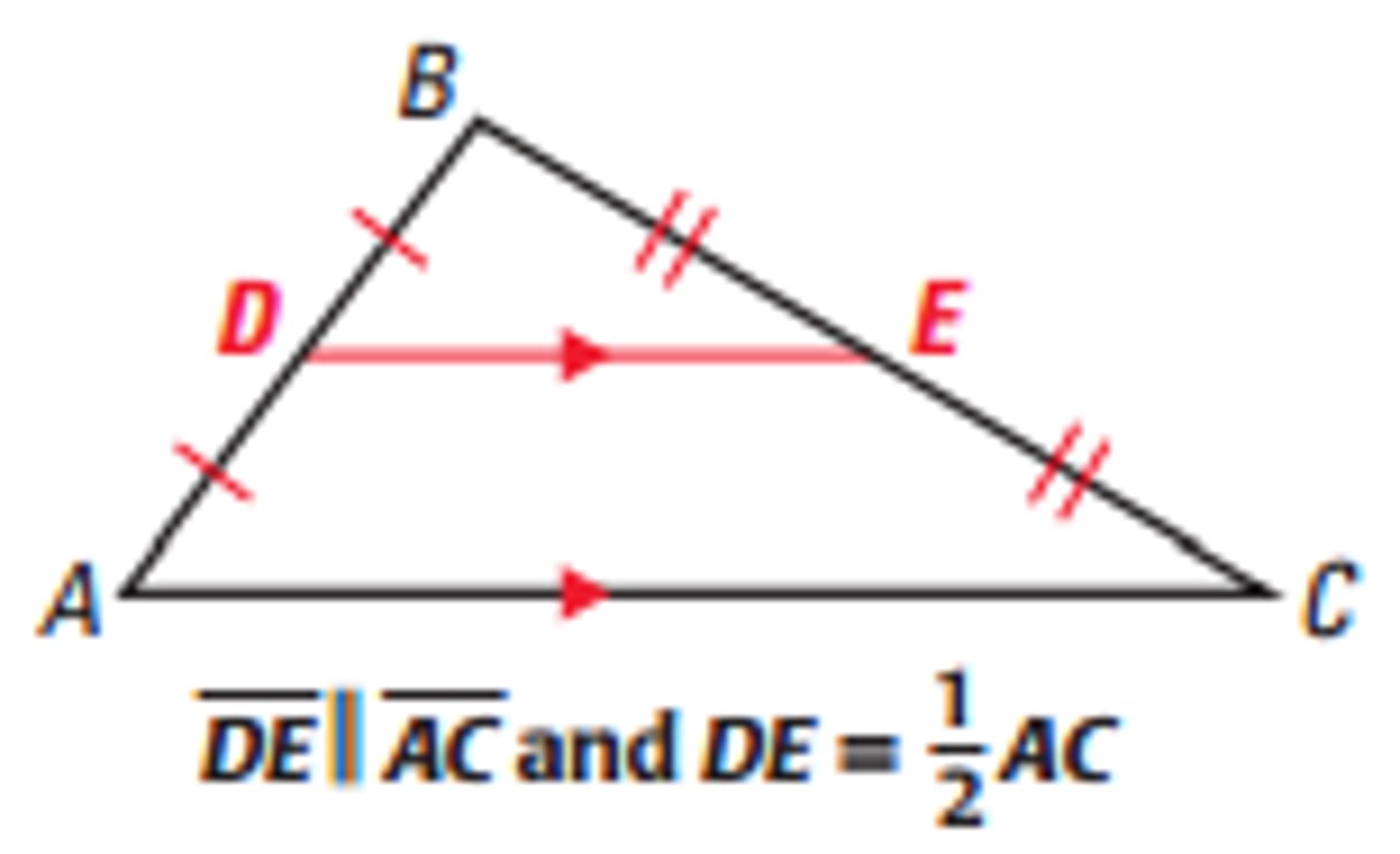
Triangle Longer Side Theorem
If one side of a triangle is longer than another side, then the angle opposite the longer side is larger than the angle opposite the shorter side.

Triangle Larger Angle Theorem
If one angle of a triangle is larger than another angle, then the side opposite the larger angle is longer than the side opposite the smaller angle.
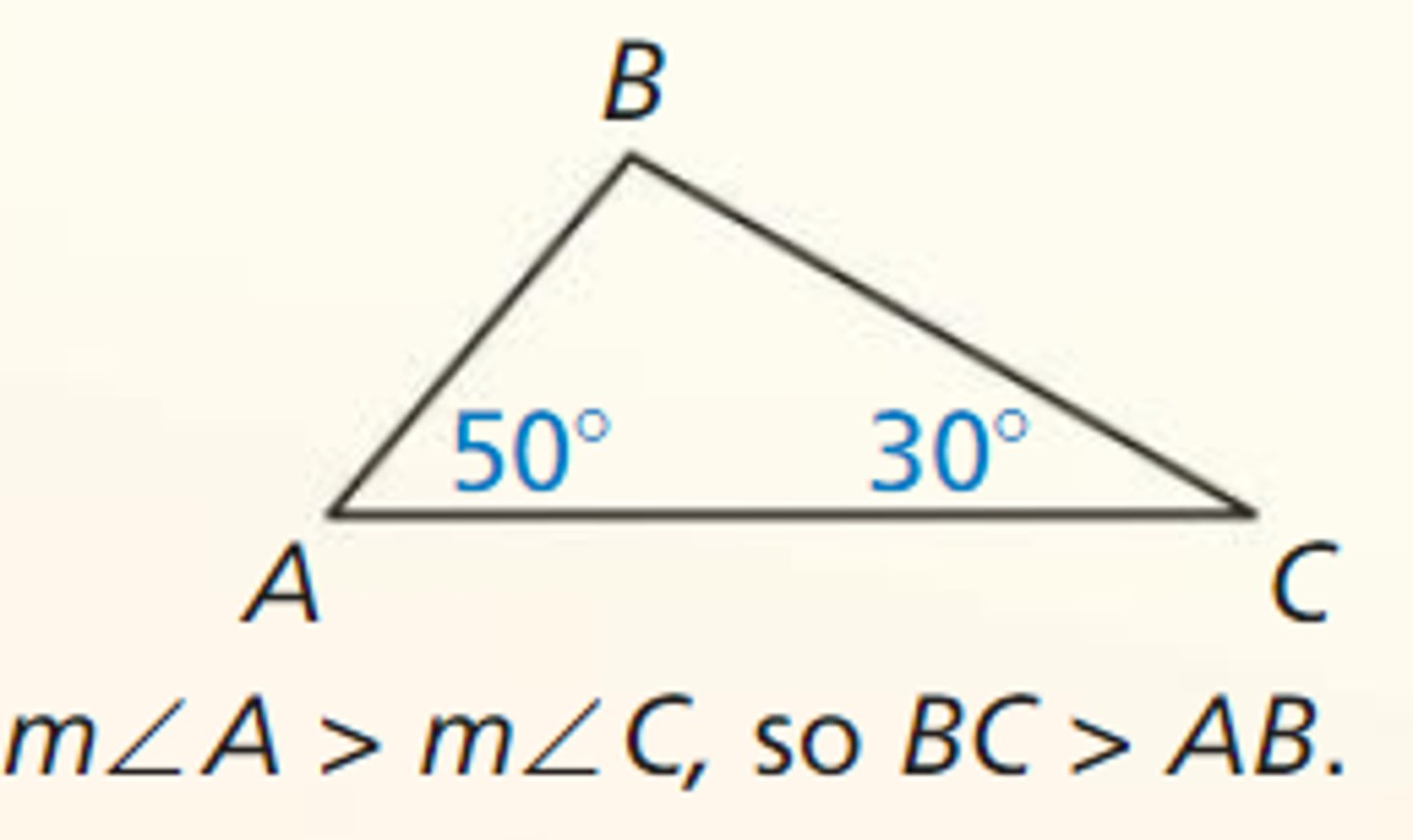
Triangle Inequality Theorem
The sum of the lengths of any two sides of a triangle is greater than the length of the third side.

Hinge Theorem
If two sides of one triangle are congruent to two sides of another triangle, and the included angle of the first is larger than the included angle of the second, then the third side of the first is longer than the third side of the second.
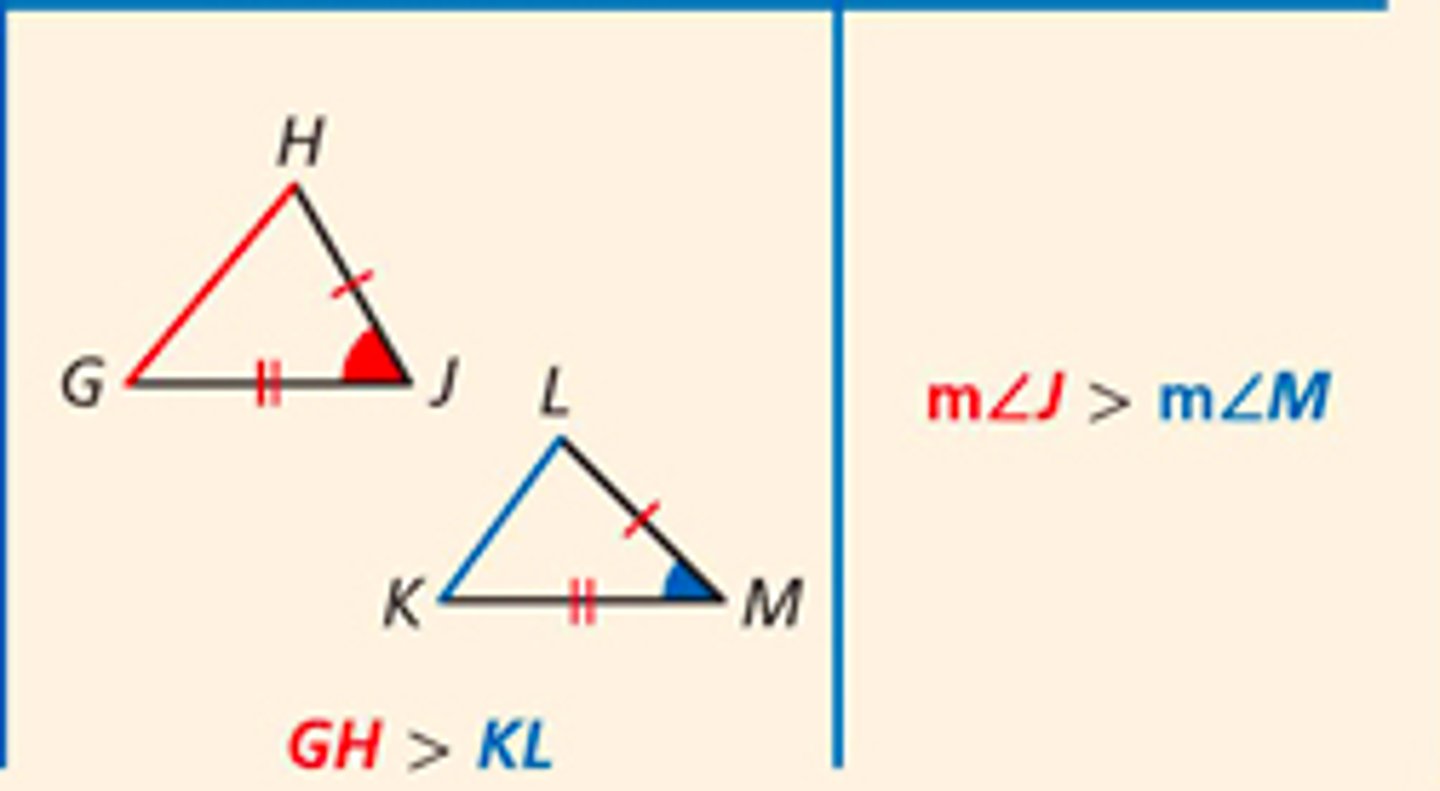
Converse of Hinge Theorem
If two sides of one triangle are congruent to two sides of another triangle, and the third side of the first is longer than the third side of the second, then the included angle of the first is larger than the included angle of the second.

Polygon Interior Angles Theorem
The sum of the measures of the interior angles of a convex n-gon is (n − 2) ⋅ 180°
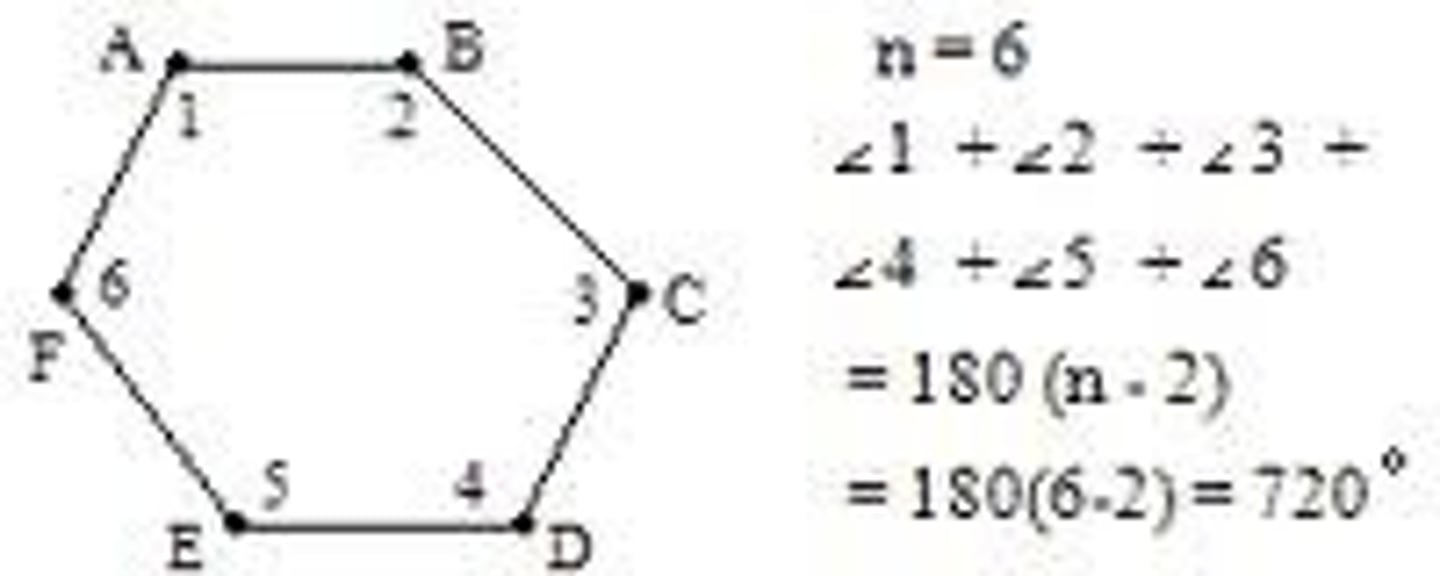
Corollary to the Polygon Interior Angles Theorem
The sum of the measures of the interior angles of a quadrilateral is 360°

Polygon Exterior Angles Theorem
The sum of the measures of the exterior angles of a convex polygon, one angle at each vertex, is 360°

Parallelogram Opposite Sides Theorem
If a quadrilateral is a parallelogram, then its opposite sides are congruent.

Parallelogram Opposite Angles Theorem
If a quadrilateral is a parallelogram, then its opposite angles are congruent.
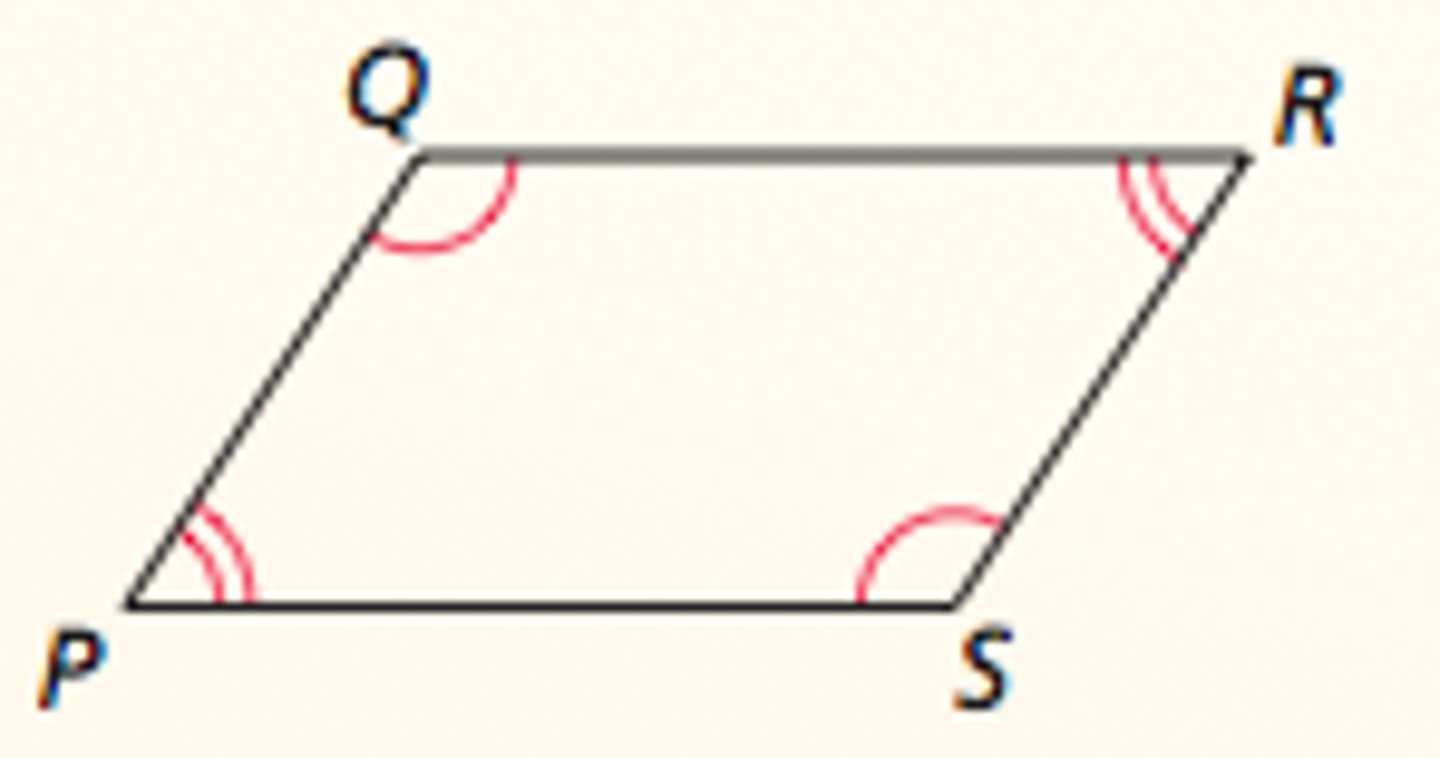
Parallelogram Consecutive Angles Theorem
If a quadrilateral is a parallelogram, then its consecutive angles are supplementary.
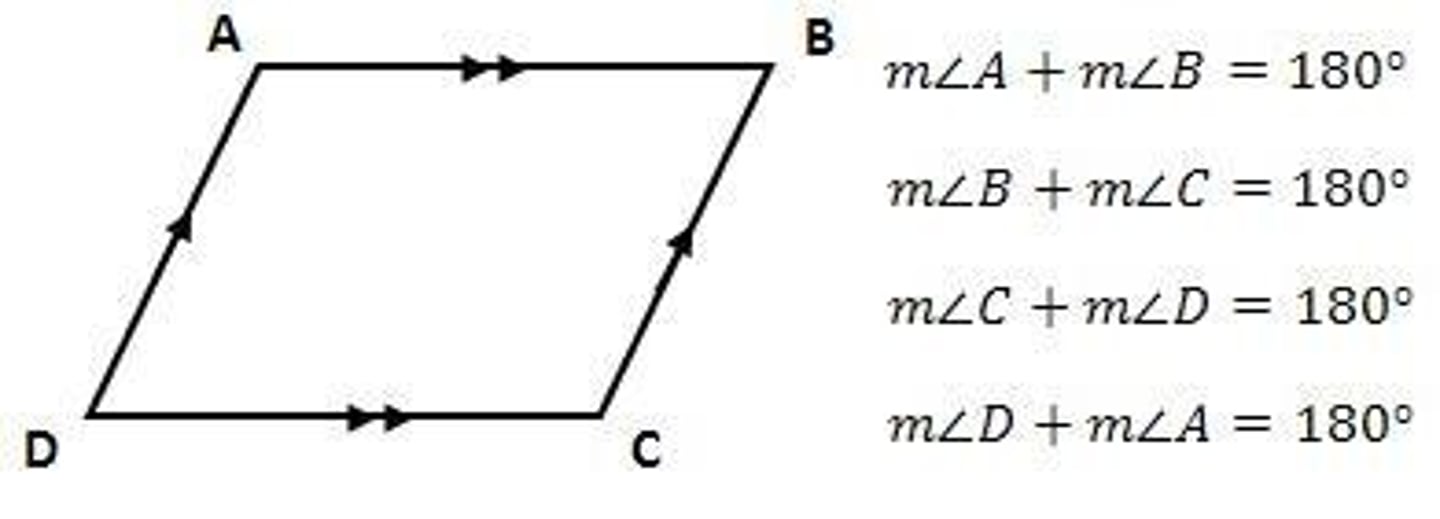
Parallelogram Diagonals Theorem
If a quadrilateral is a parallelogram, then its diagonals bisect each other.
Parallelograms in Coordinate Planes 1
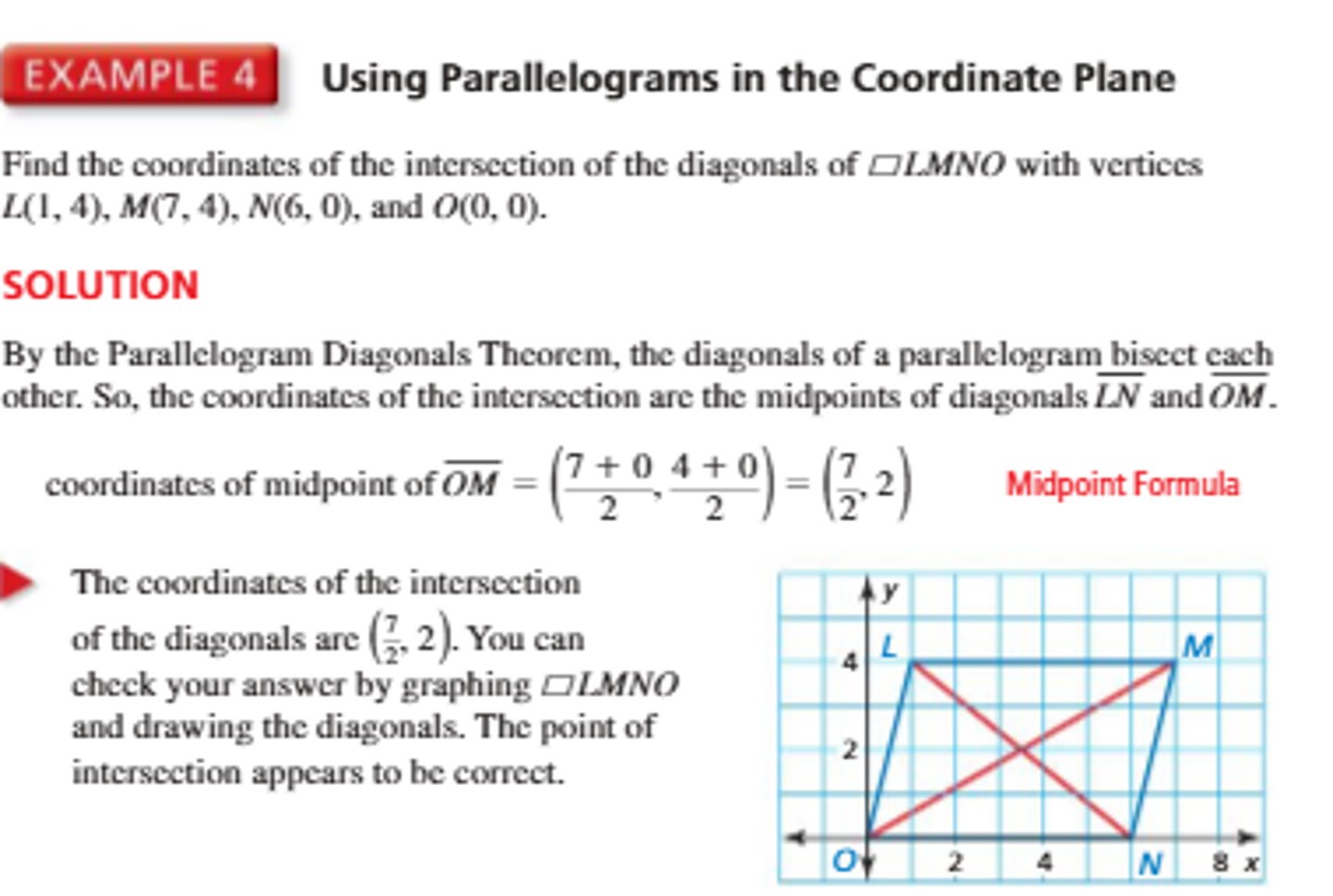
Parallelograms in Coordinate Planes 2

Parallelogram Opposite Sides Converse
If both pairs of opposite sides of a quadrilateral are congruent, then the quadrilateral is a parallelogram.

Parallelogram Opposite Angles Converse
If both pairs of opposite angles of a quadrilateral are congruent, then the quadrilateral is a parallelogram.
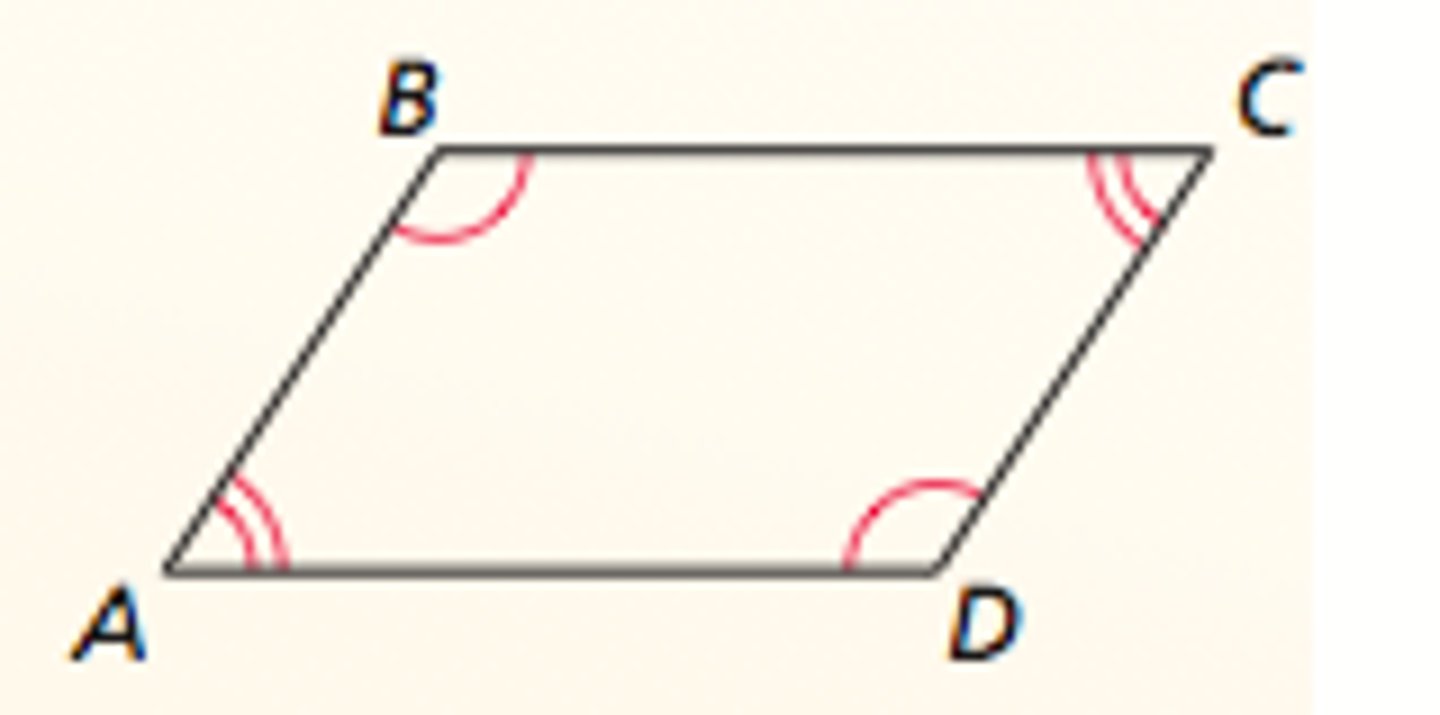
Opposite Sides Parallel and Congruent Theorem
If one pair of opposite sides of a quadrilateral are congruent and parallel, then the quadrilateral is a parallelogram.
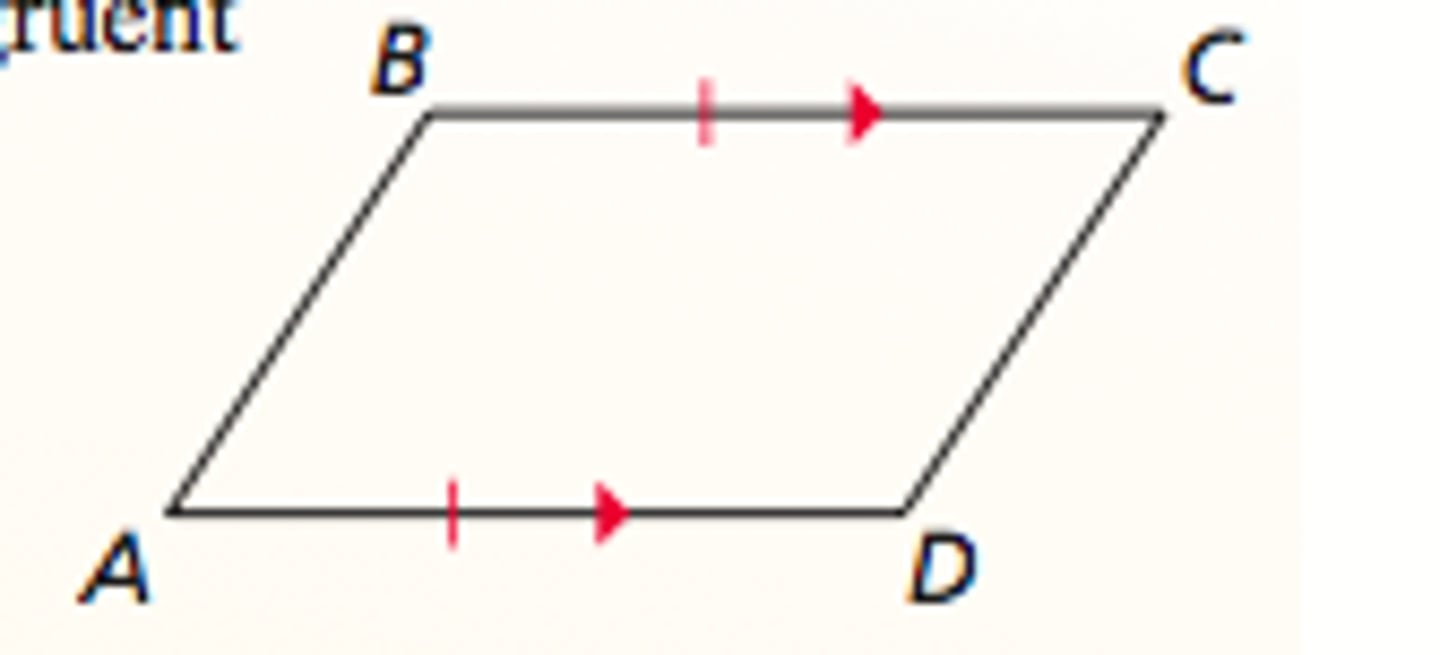
Parallelogram Diagonals Converse
If the diagonals of a quadrilateral bisect each other, then the quadrilateral is a parallelogram.

Ways to Prove a Quadrilateral Parallelogram

Rhombuses, Rectangles, and Squares

rhombus Corollary
A quadrilateral is a rhombus if and only if it has four congruent sides.
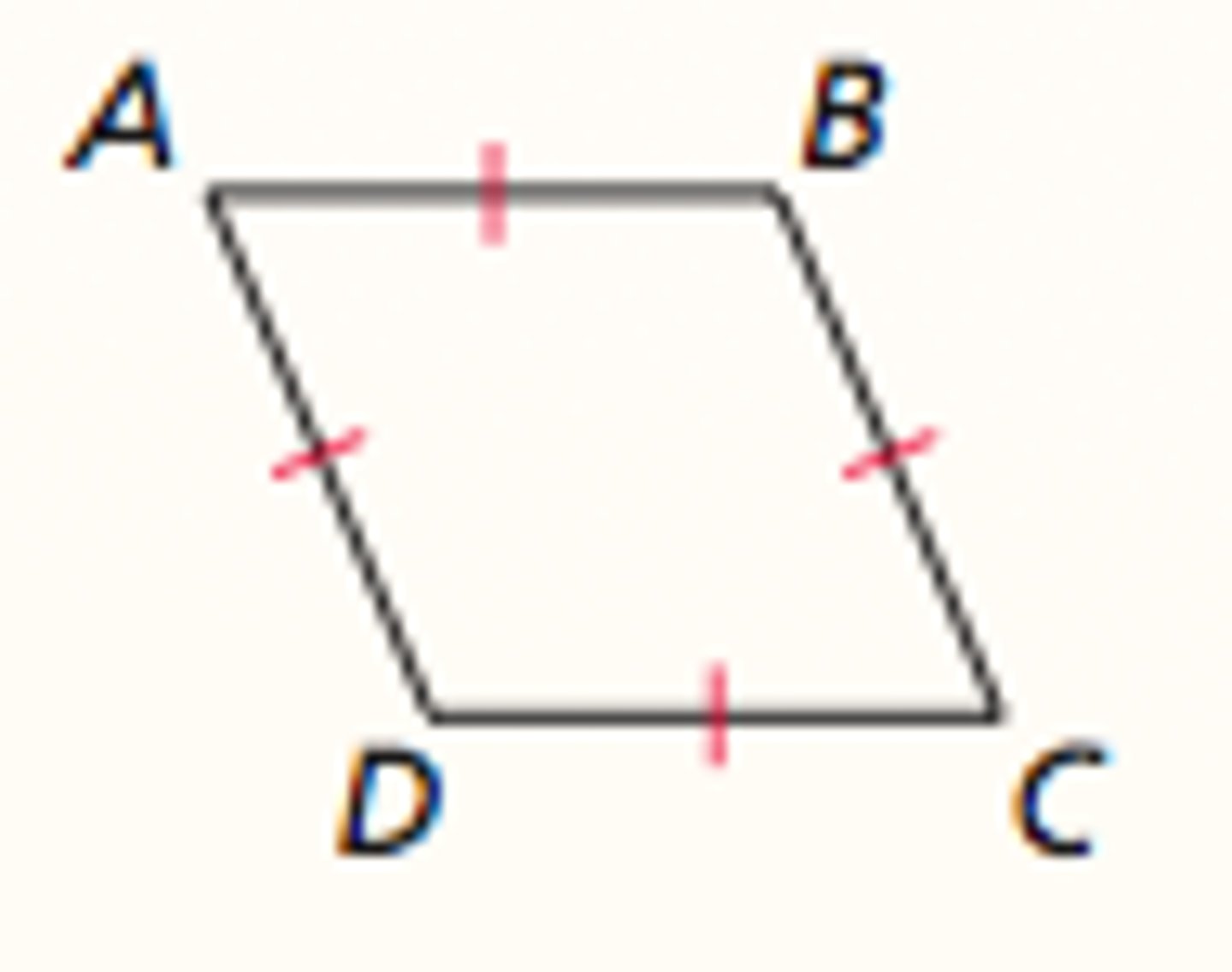
rectangle Corollary
A quadrilateral is a rectangle if and only if it has four right angles.
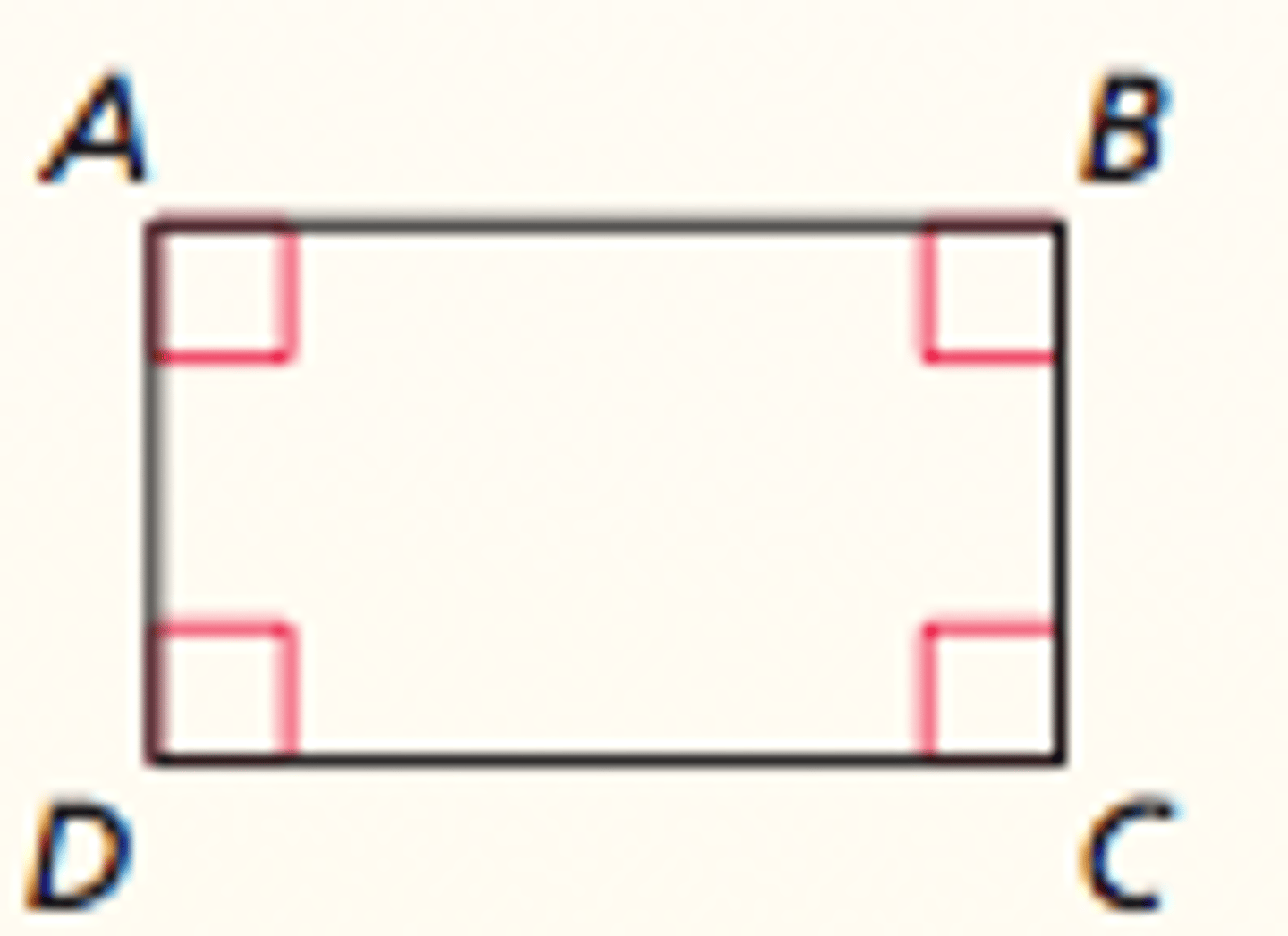
square Corollary
A quadrilateral is a square if and only if it is a rhombus and a rectangle.
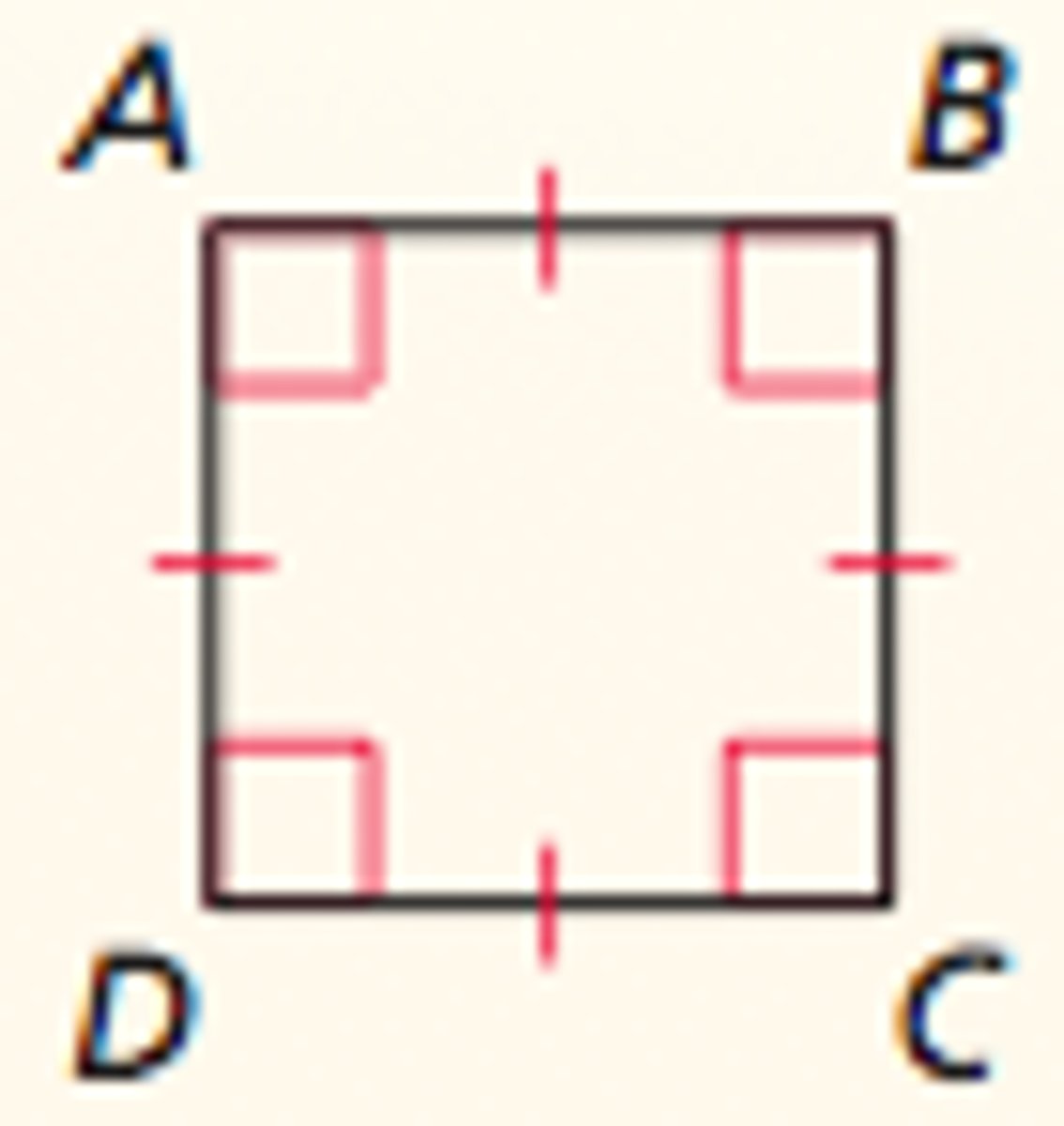
Quadrilateral Relationships Diagram
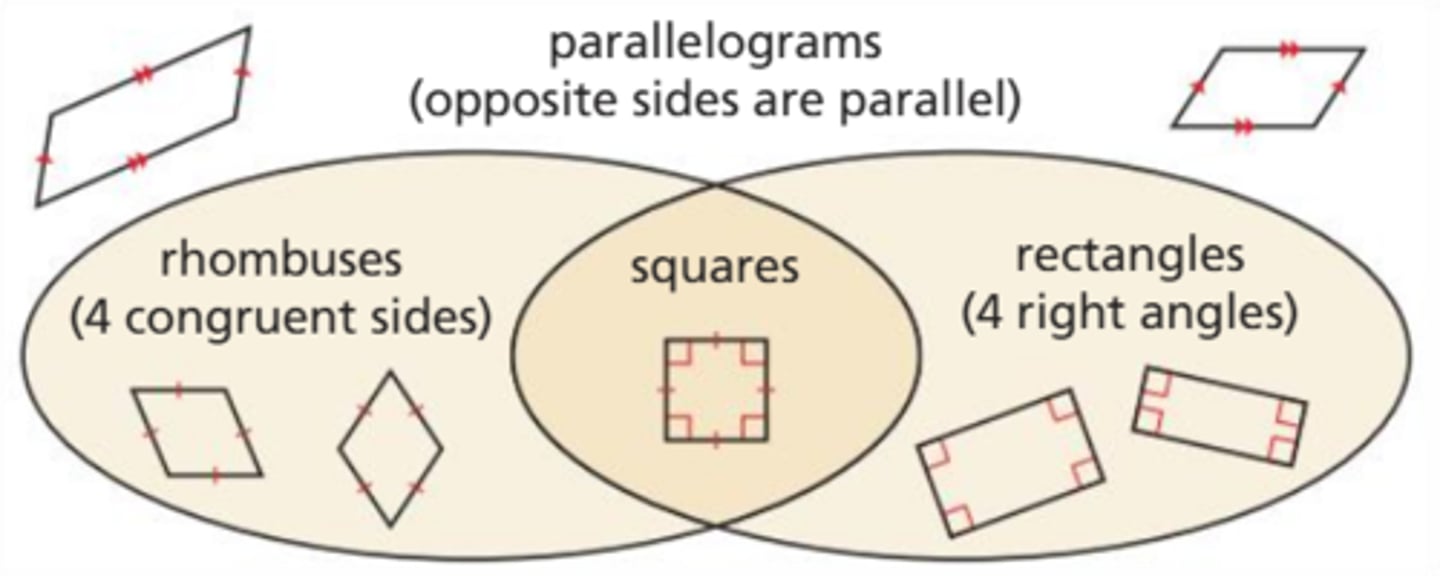
Rhombus Diagonals Theorem
A parallelogram is a rhombus if and only if its diagonals are perpendicular.
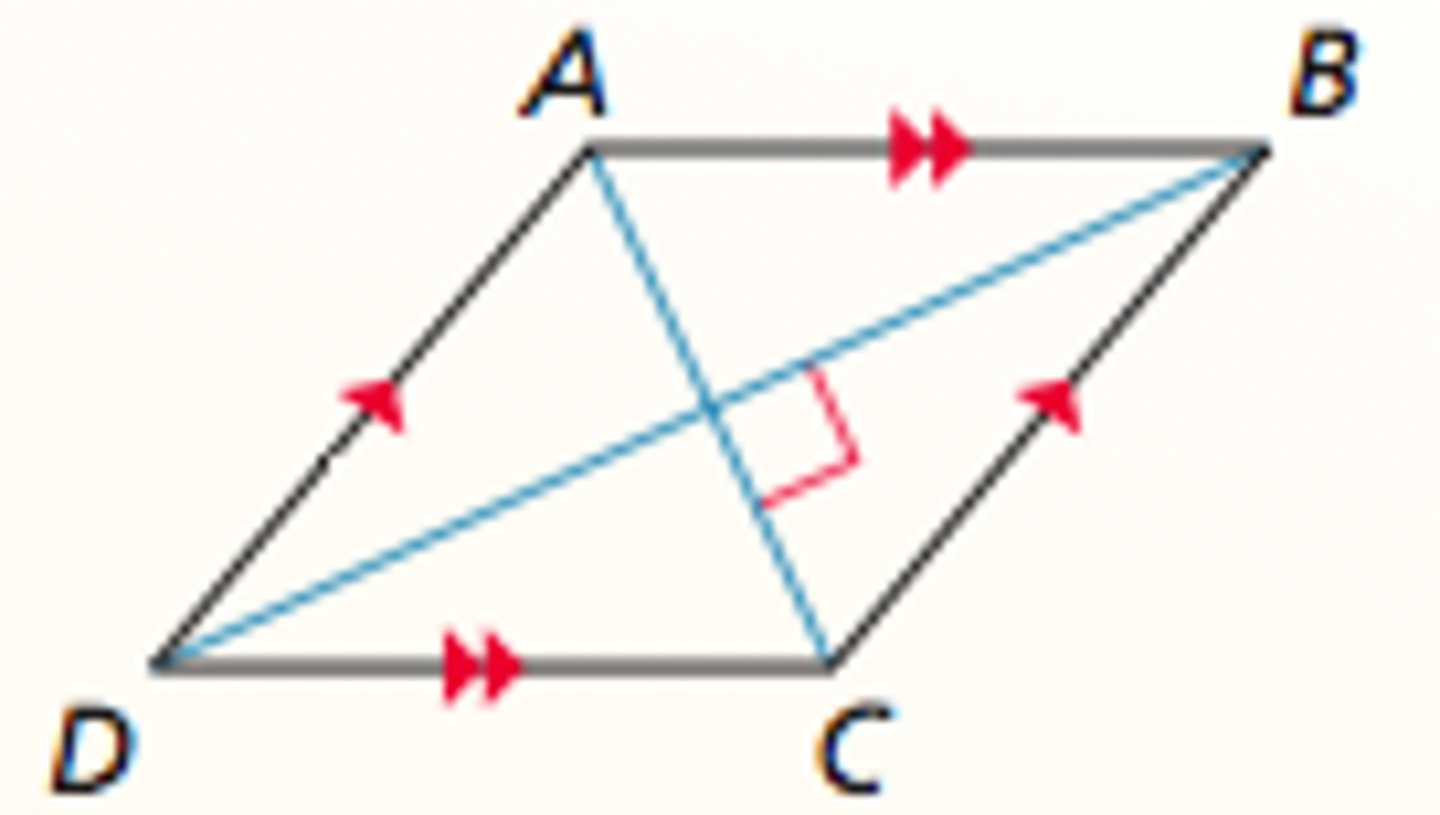
Rhombus Opposite Angles Theorem
A parallelogram is a rhombus if and only if each diagonal bisects a pair of opposite angles.
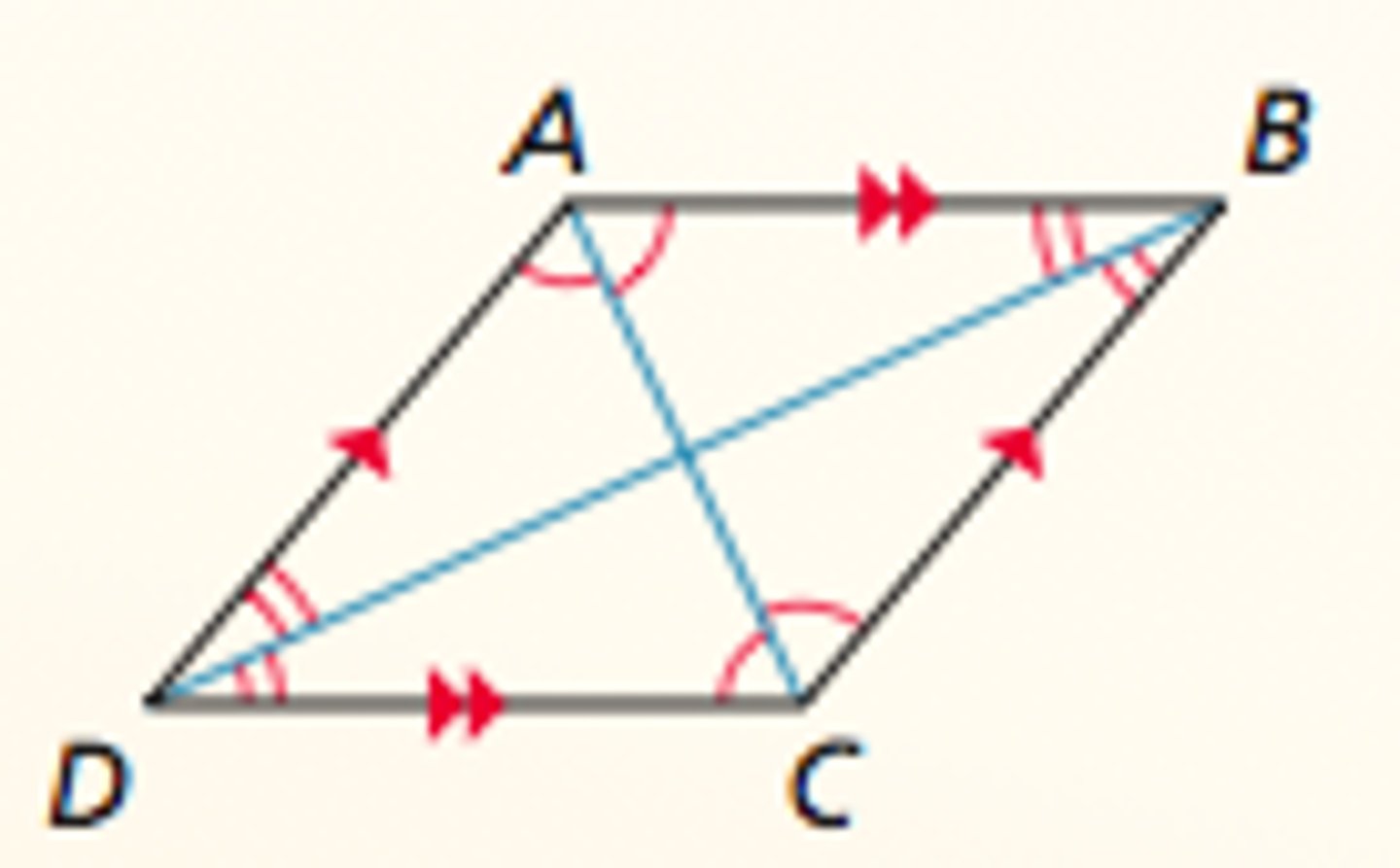
Rectangle Diagonals Theorem
A parallelogram is a rectangle if and only if its diagonals are congruent.
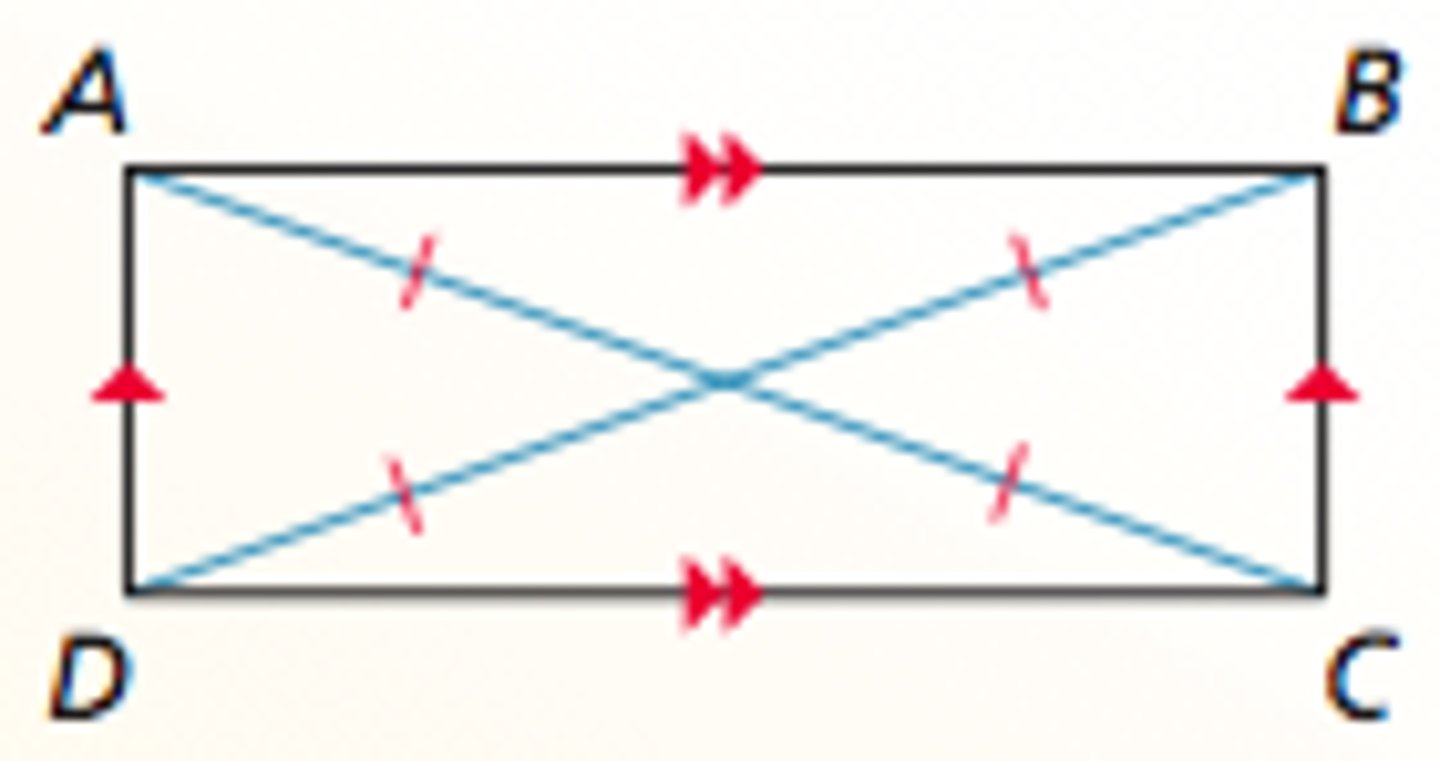
Isosceles Trapezoid Base Angles Theorem
If a trapezoid is isosceles, then each pair of base angles is congruent
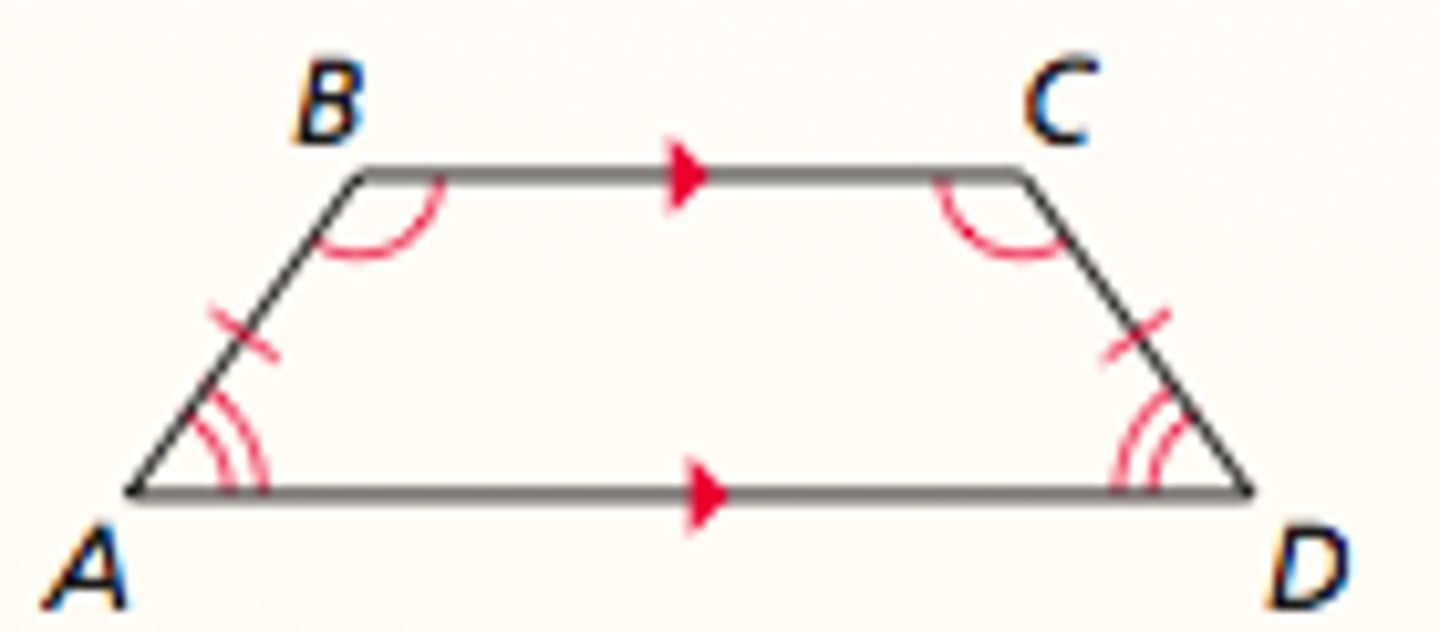
Isosceles Trapezoid Base Angles Converse
If a trapezoid has a pair of congruent base angles, then it is an isosceles trapezoid.
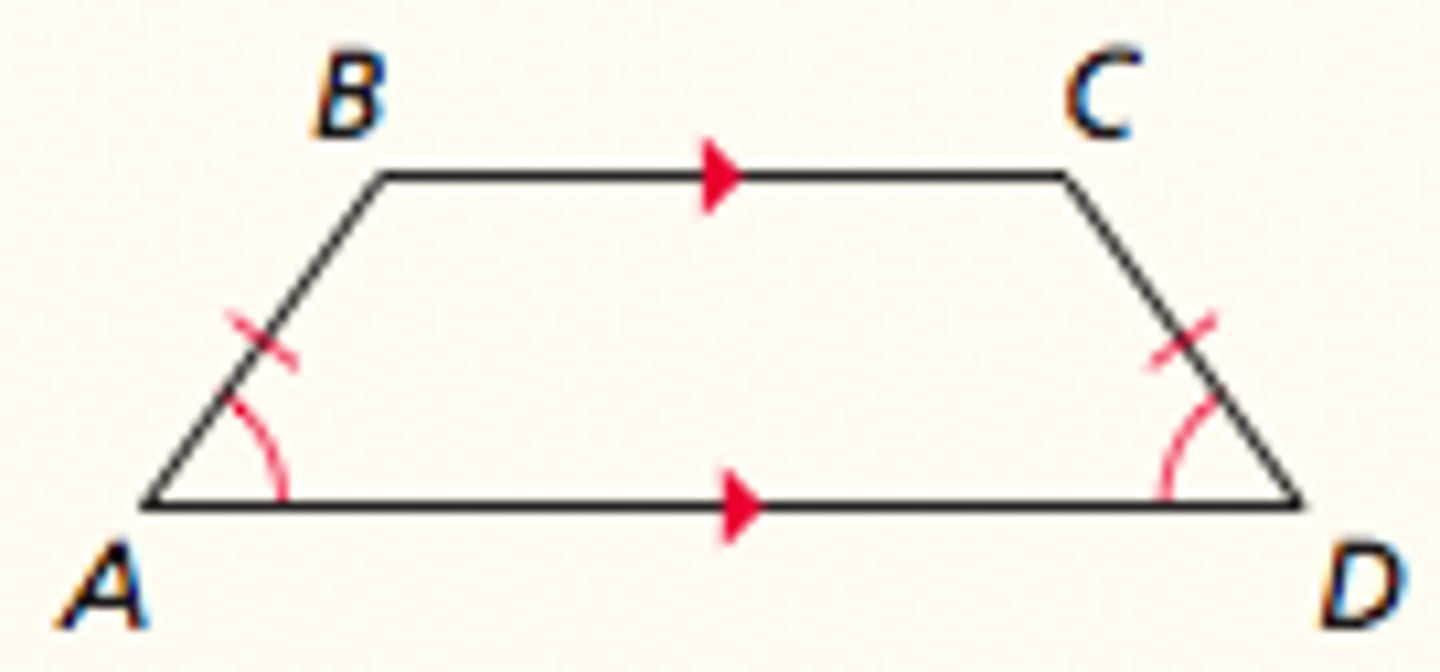
Isosceles Trapezoid Diagonals Theorem
A trapezoid is isosceles if and only if its diagonals are congruent.
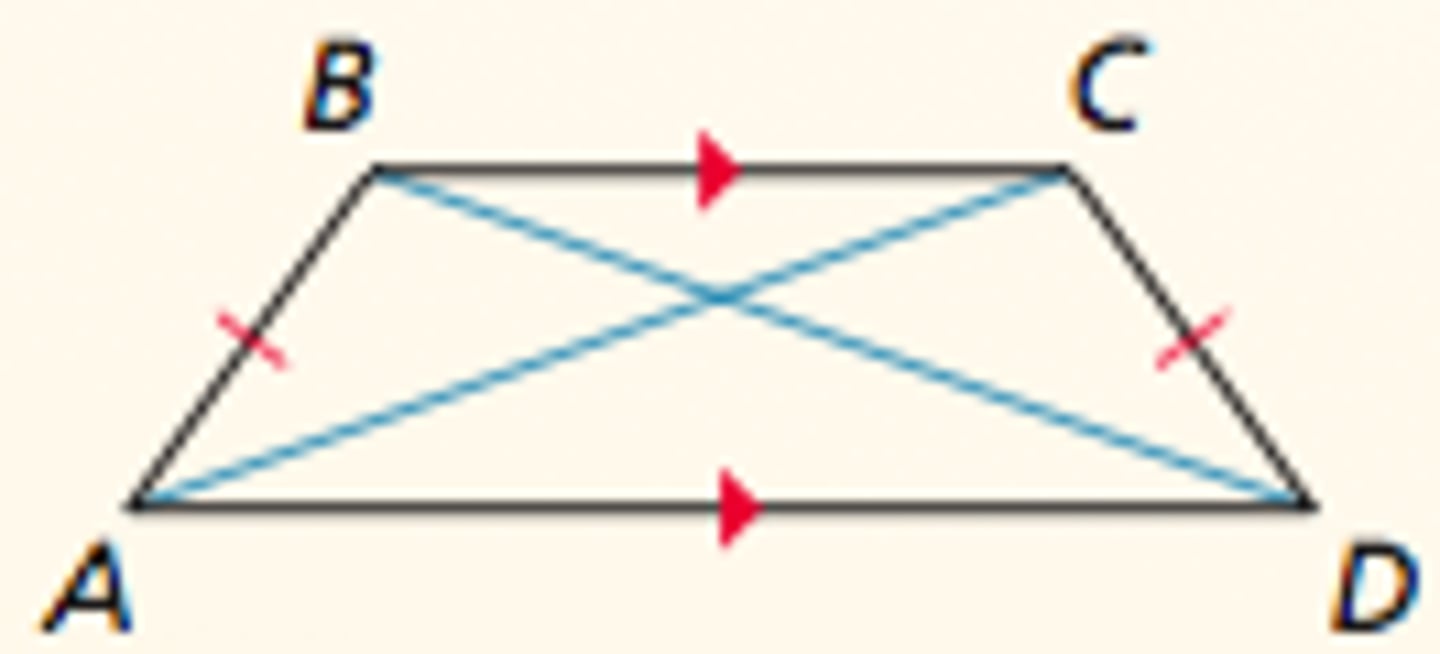
Trapezoid Midsegment Theorem
The midsegment of a trapezoid is parallel to each base and its length is one half the sum of the lengths of the bases.
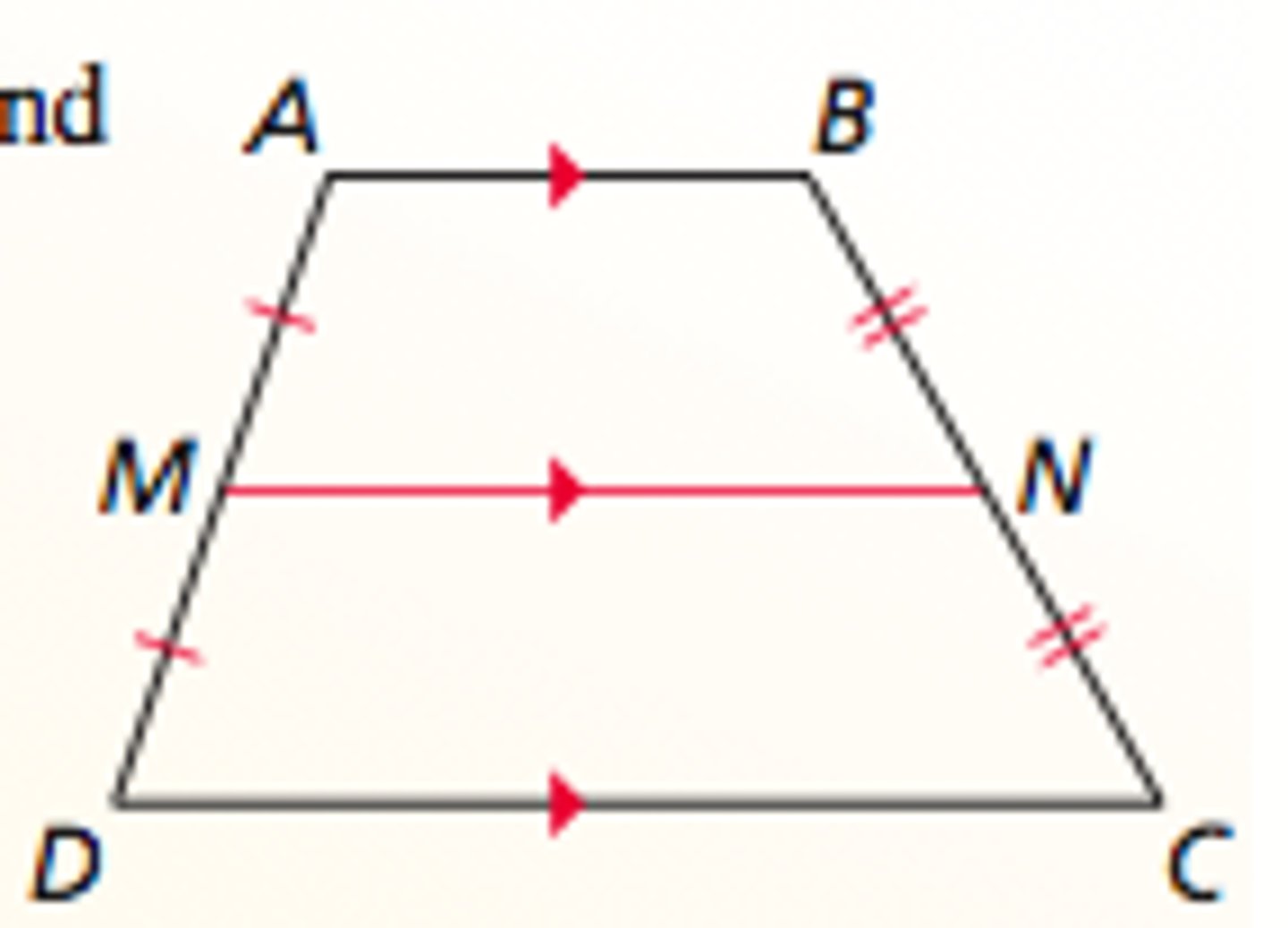
Kite Diagonals Theorem
If a quadrilateral is a kite, then its diagonals are perpendicular.
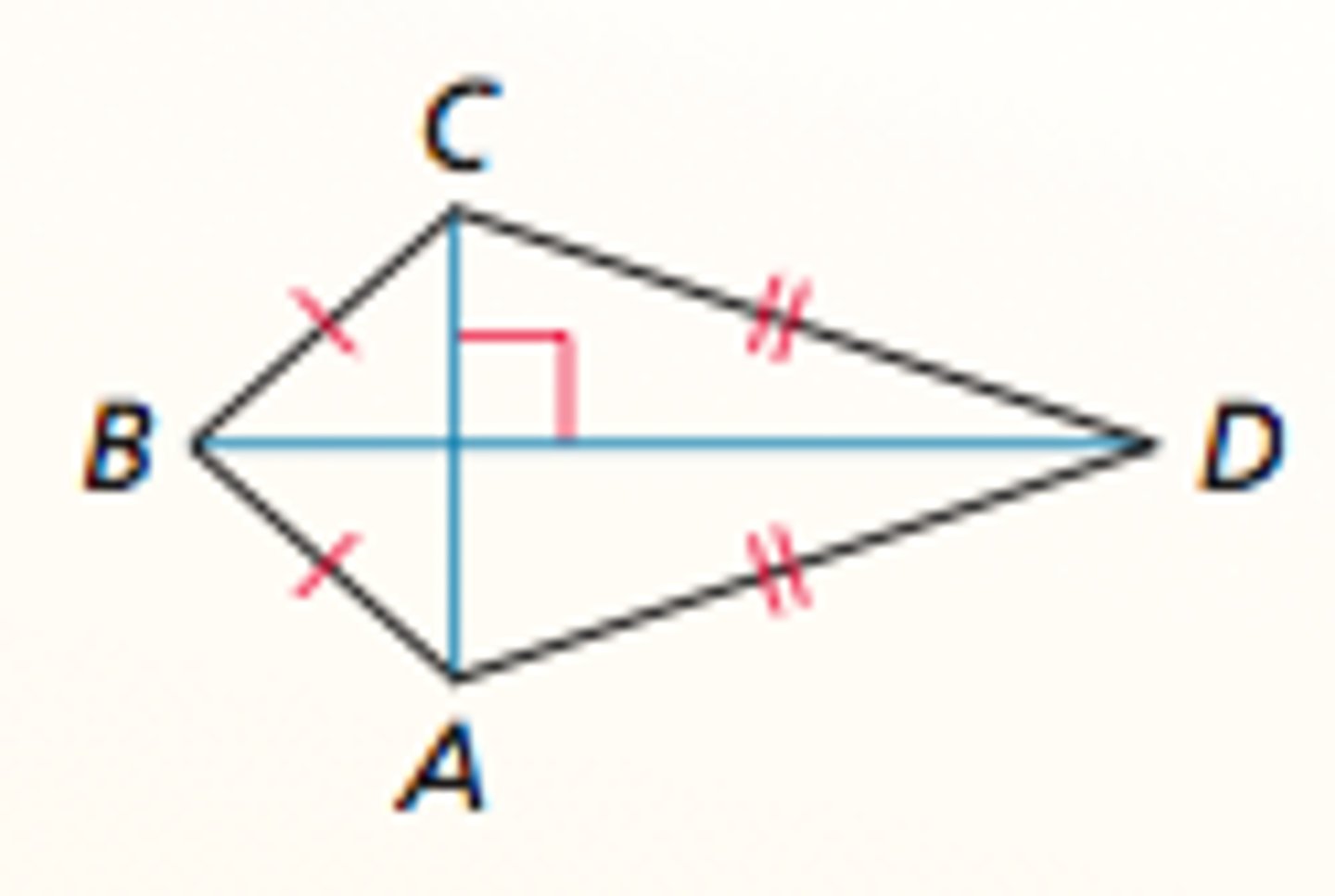
Kite Opposite Angles Theorem
If a quadrilateral is a kite, then exactly one pair of opposite angles are congruent.
Special Quadrilaterals Chart

Dilations, Perimeter, Area, and Volume

Corresponding Parts of Similar Polygons

Corresponding Lengths in Similar Polygons
If two polygons are similar, then the ratio of any two corresponding lengths in the polygon is equal to the scale factor of the similar polygons.
Perimeters of Similar Polygons Theorem
If two polygons are similar, then the ratio of their perimeters is equal to the ratios of their corresponding side lengths.
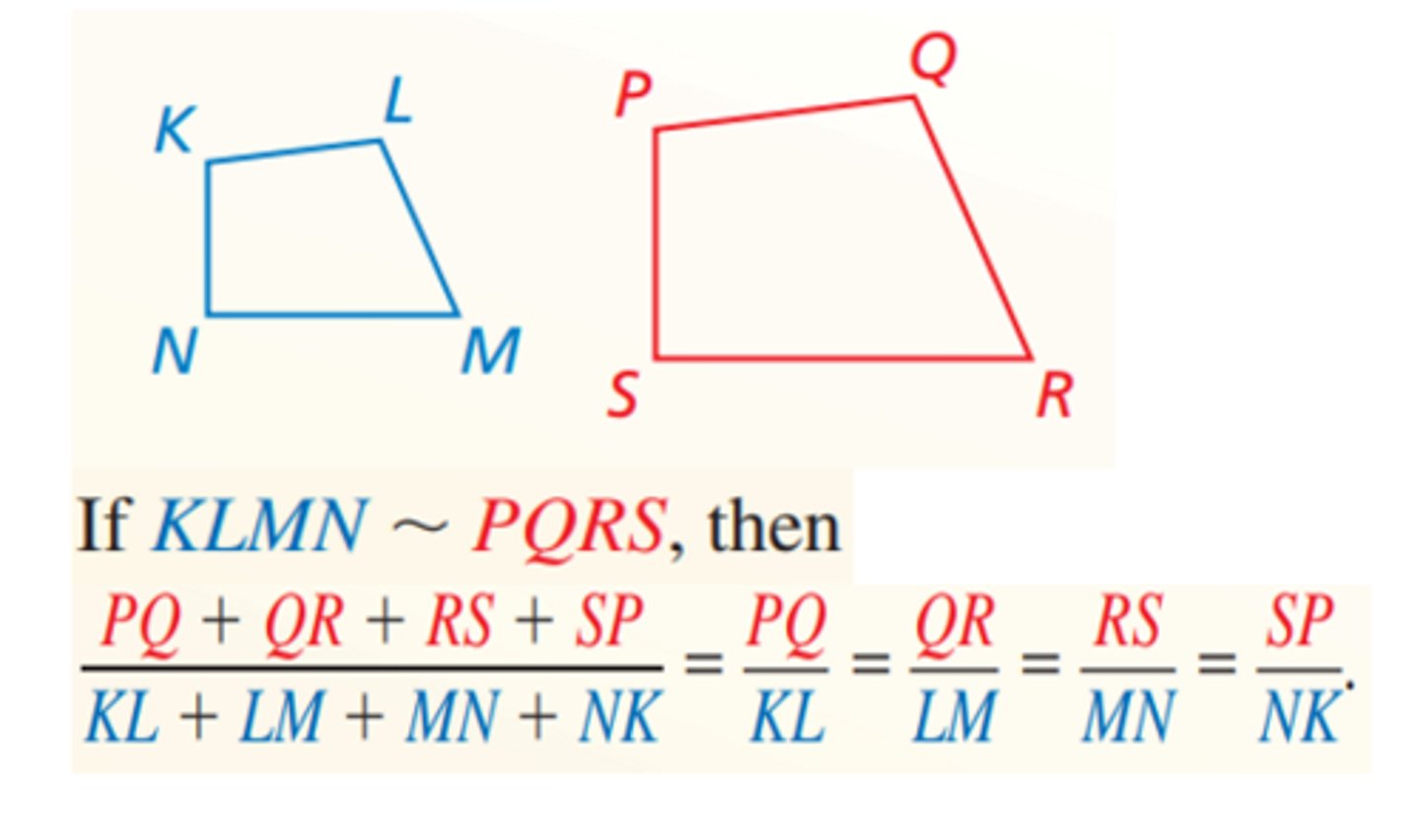
Areas of Similar Polygons Theorem
If two polygons are similar, then the ratio of their areas is equal to the squares of the ratios of their corresponding side lengths.

Angle-Angle(AA) Similarity Theorem
If two angles of one triangle are congruent to two angles of another triangle, then the two triangles are similar.

Side-Side-Side(SSS) Similarity Theorem
If the corresponding side lengths of two triangles are proportional, then the triangles are similar.

Side-Angle-Side (SAS) similarity theorem
If an angle of one triangle is congruent to an angle of a second triangle and the lengths of the sides including these angles are proportional, then the triangles are similar.
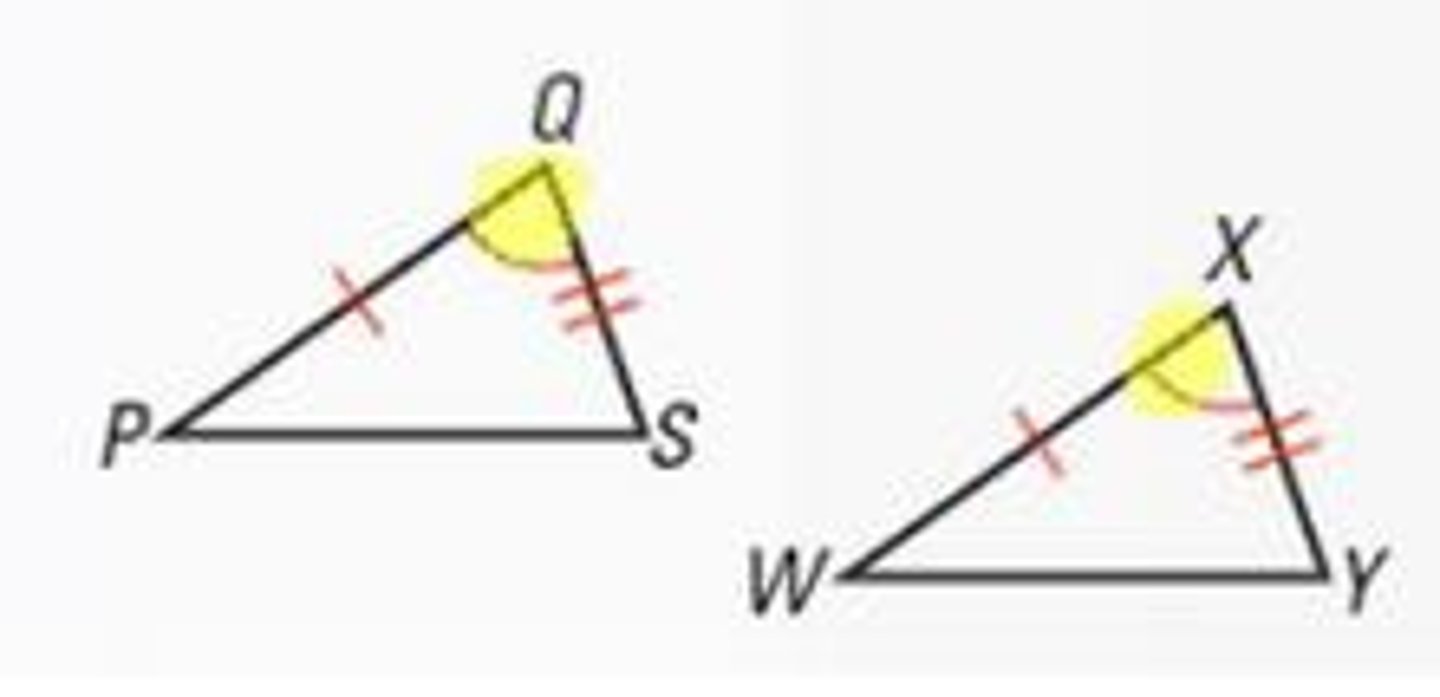
Triangle Proportionality Theorem
If a line parallel to one side of a triangle intersects the other two sides, then it divides the two sides proportionally.
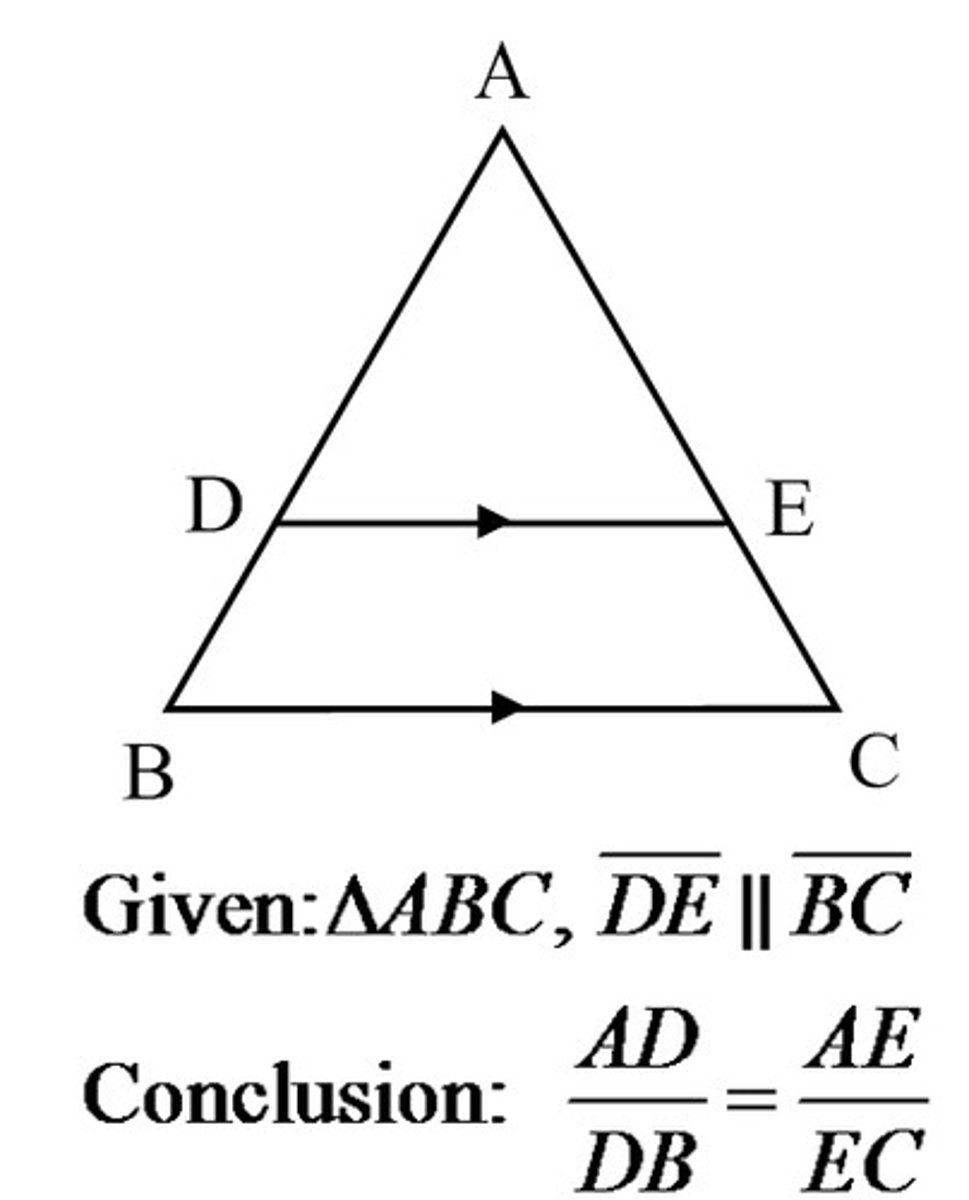
Converse of the Triangle Proportionality Theorem
If a line divides two sides of a triangle proportionally, then it is parallel to the third side.
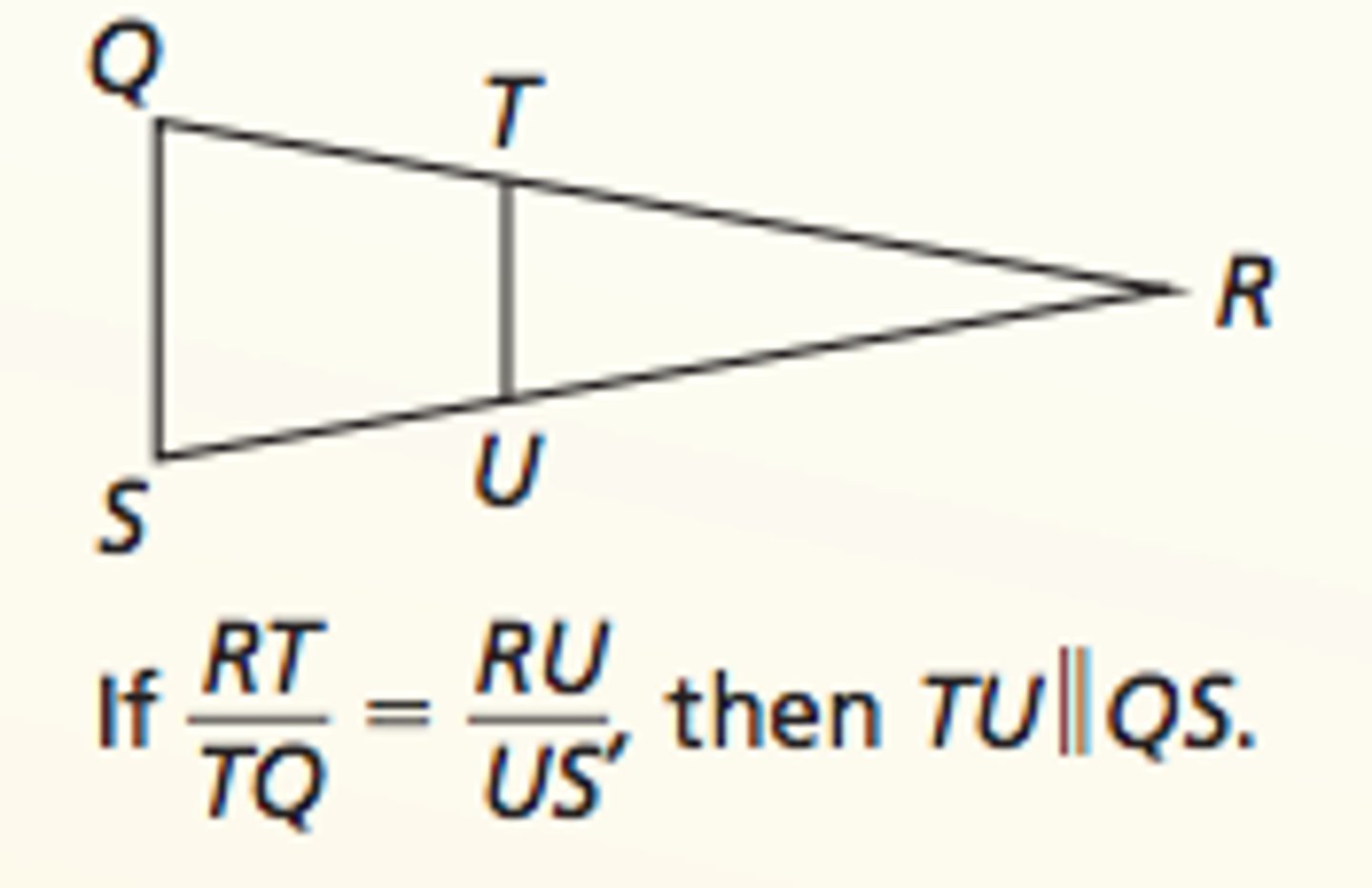
Three Parallel Lines Theorem
If three parallel lines intersect two transversals, then they divide the transversals proportionally.
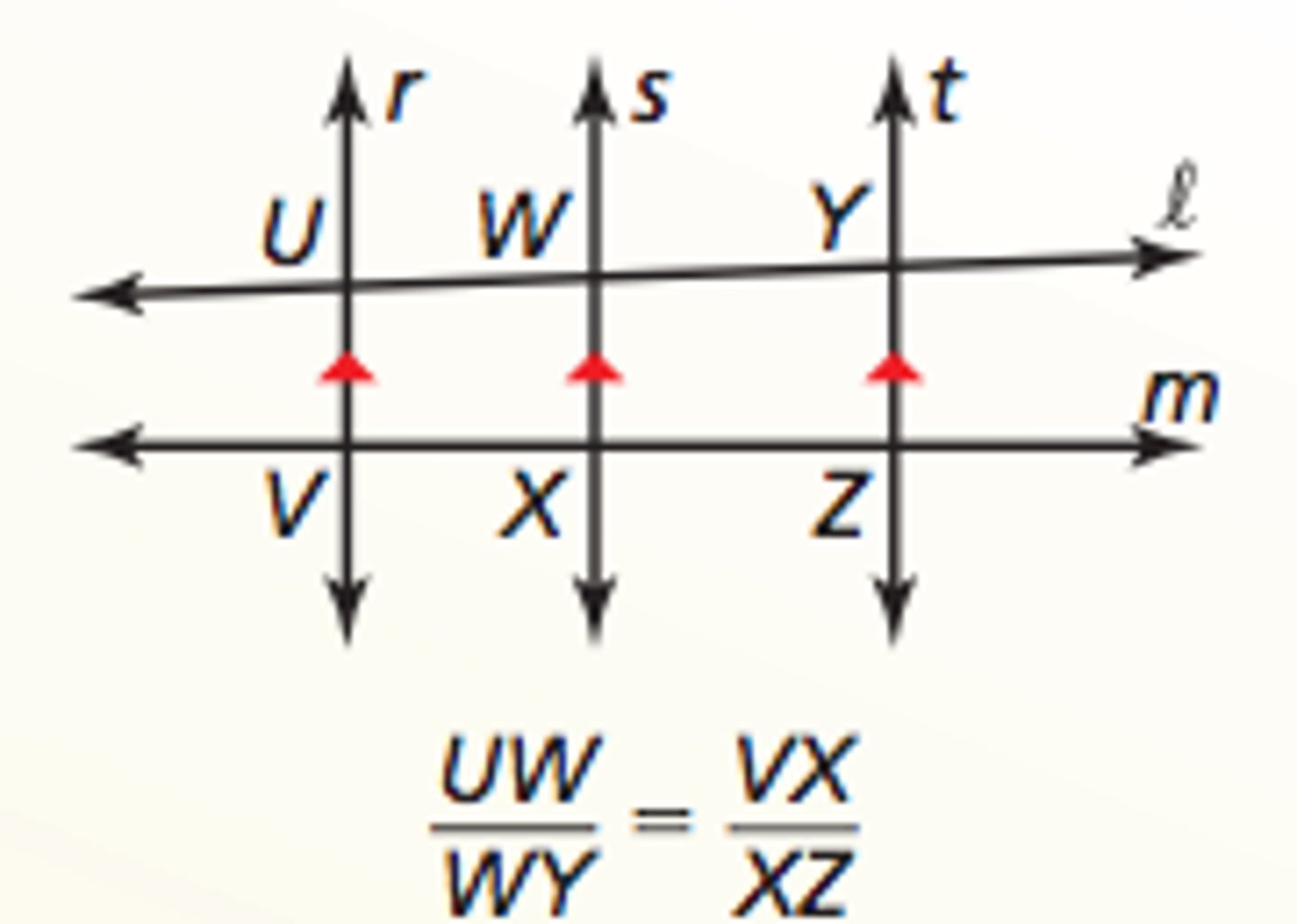
Triangle Angle Bisector Theorem
If a ray bisects an angle of a triangle, then it divides the opposite side into segments proportional to the other two sides.
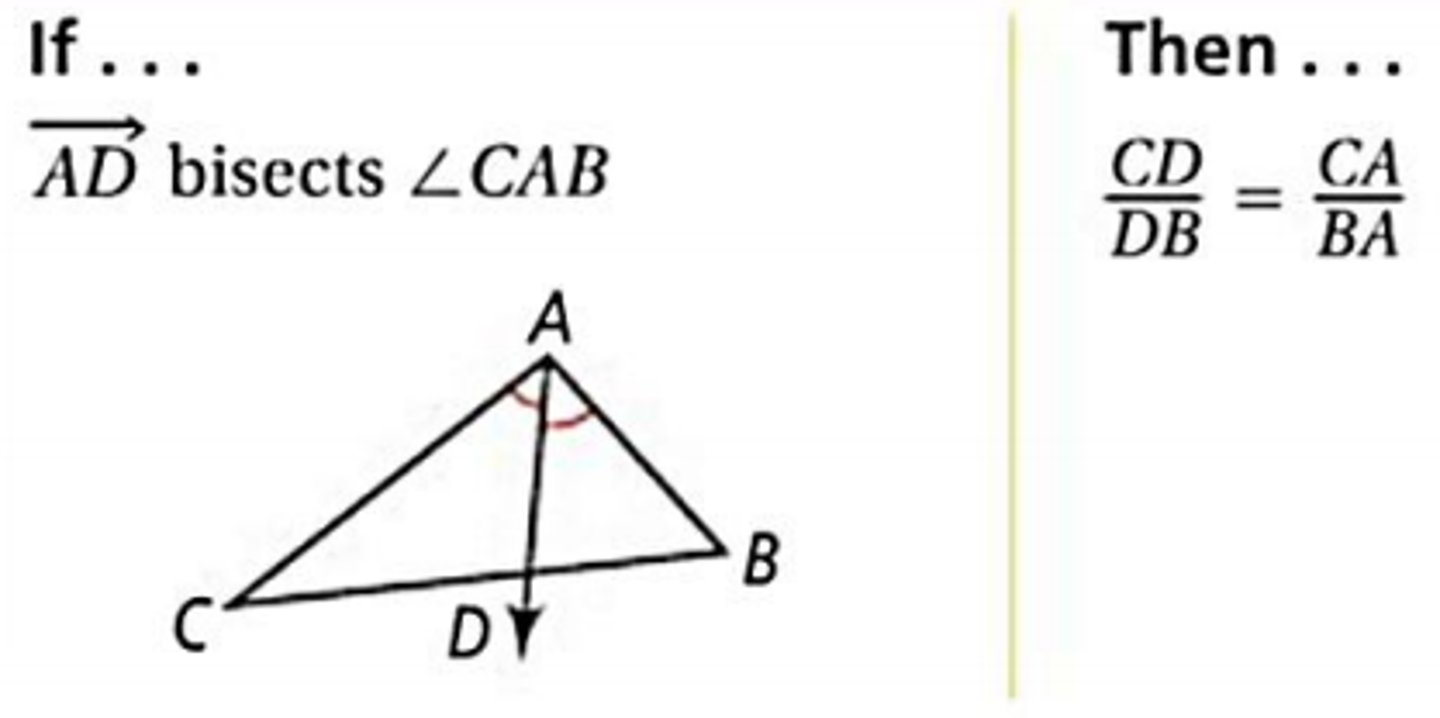
Pythagorean Theorem
In a right triangle, the square of the length of the hypotenuse is equal to the sum of the squares of the lengths of the legs.
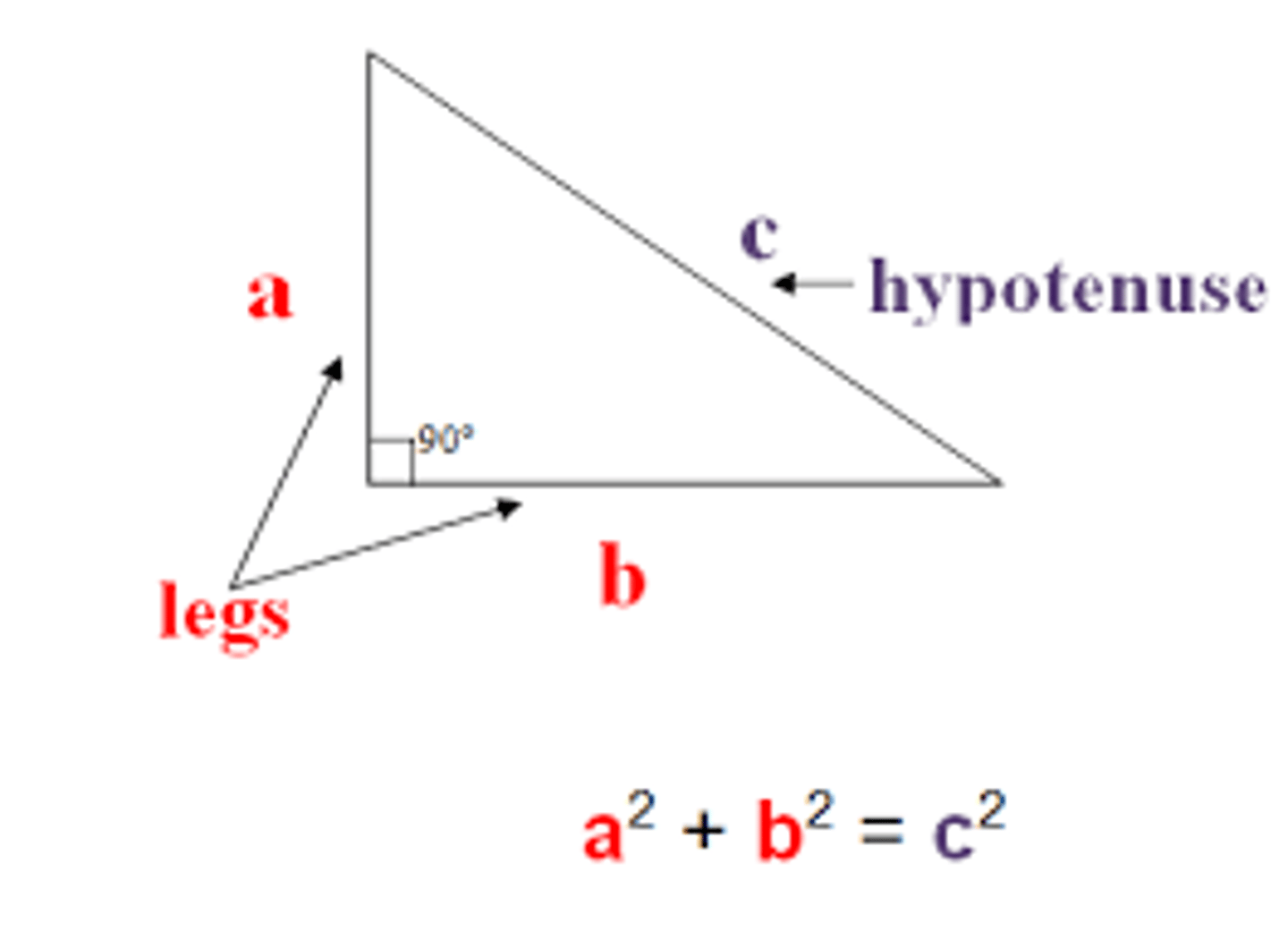
Pythagorean Formula
a²+b²=c²
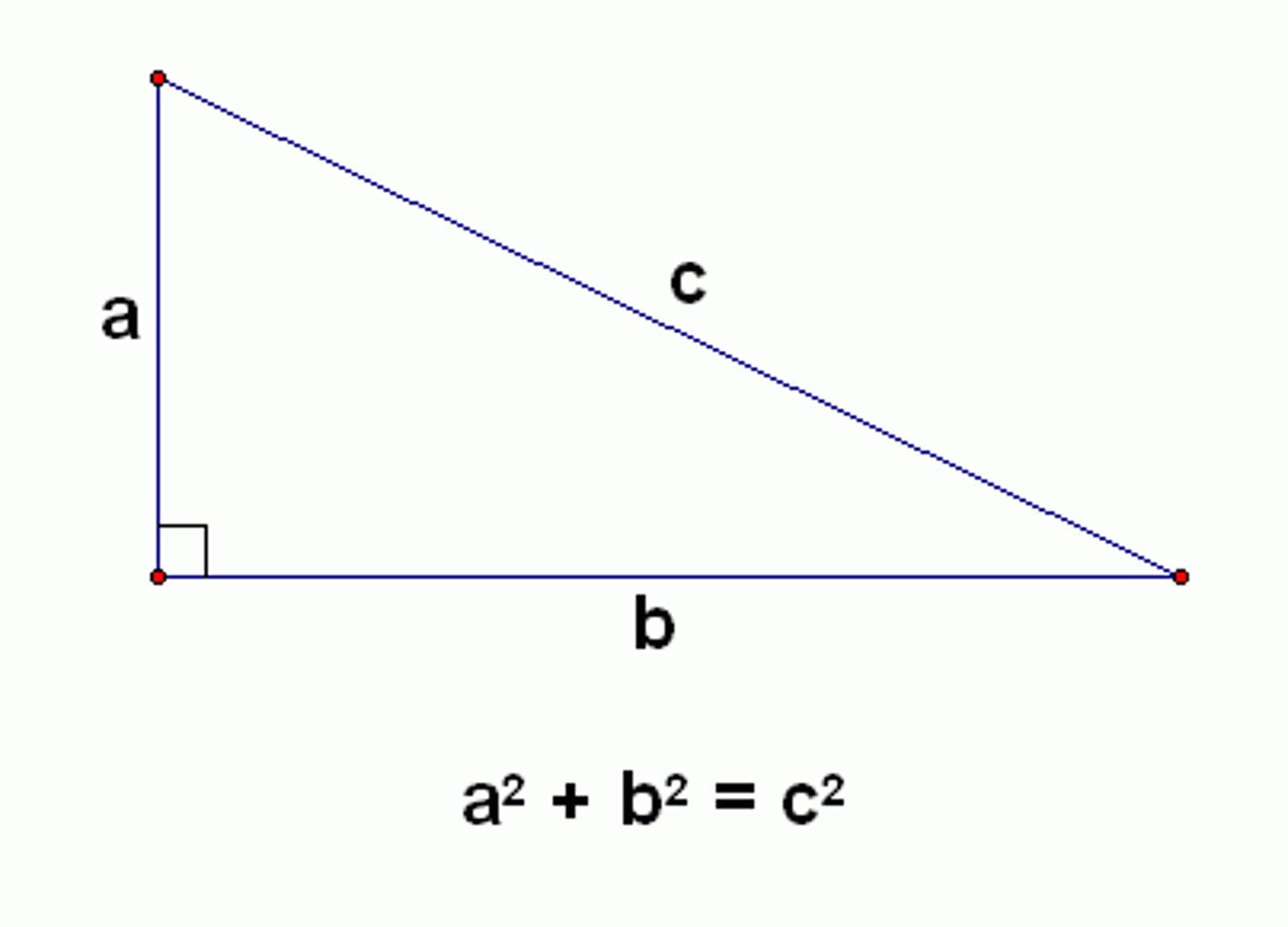
Pythagorean Triples
A set of three positive integers: a, b, and c that satisfy the equation for the Pythagorean Theorem.
Pythagorean Triple Combinations
3x, 4x, 5x
5x, 12x, 13x
8x, 15x, 17x
7x, 24x, 25x
Converse of the Pythagorean Theorem
If the square of the length of the longest side of a triangle is equal to the sum of the squares of the lengths of the other two sides, then the triangle is a right triangle.
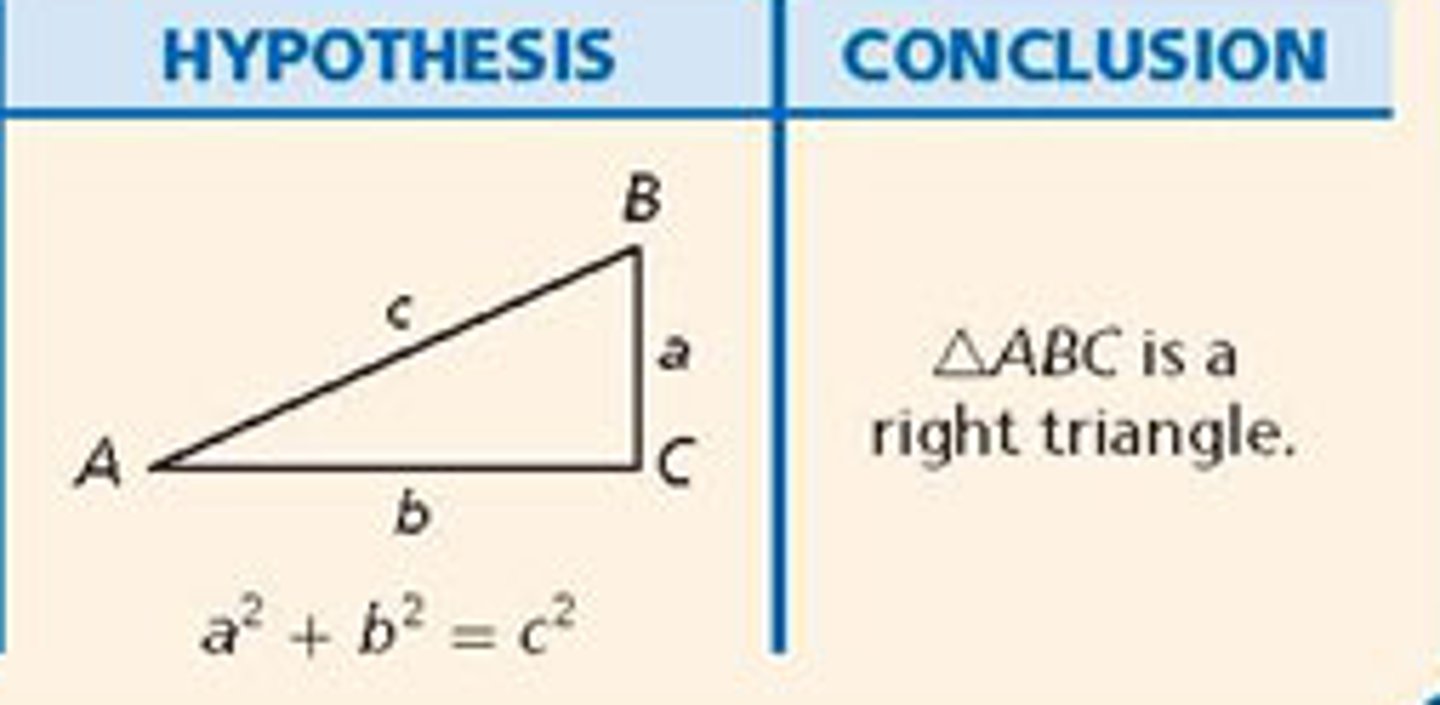
Pythagorean Inequalities Theorem
For any △ABC, where c is the length of the longest side, the following statements are true.
If c² < a² + b² , then △ABC is acute.
If c² > a² + b², then △ABC is obtuse.

45°-45°-90° Triangle Theorem
In a 45°-45°-90° triangle, the hypotenuse is √2 times as long as each leg.

30°-60°-90° Triangle Theorem
In a 30°-60°-90° triangle, the hypotenuse is twice as long as the shorter leg, and the longer leg is √3 times as long as the shorter leg.

geometric mean
The geometric mean of two positive numbers a and b is the positive number x such that a/x=x/b. So, x^2=ab, and x=square root ab.
Right Triangle Similarity Theorem
If the altitude is drawn to the hypotenuse of a right triangle, then the two triangles formed are similar to the original triangle and to each other.

geometric mean (Altitude) Theorem
In a right triangle, the altitude from the right angle to the hypotenuse divides the hypotenuse into two segments. The length of the altitude is the geometric mean of the lengths of the two segments.
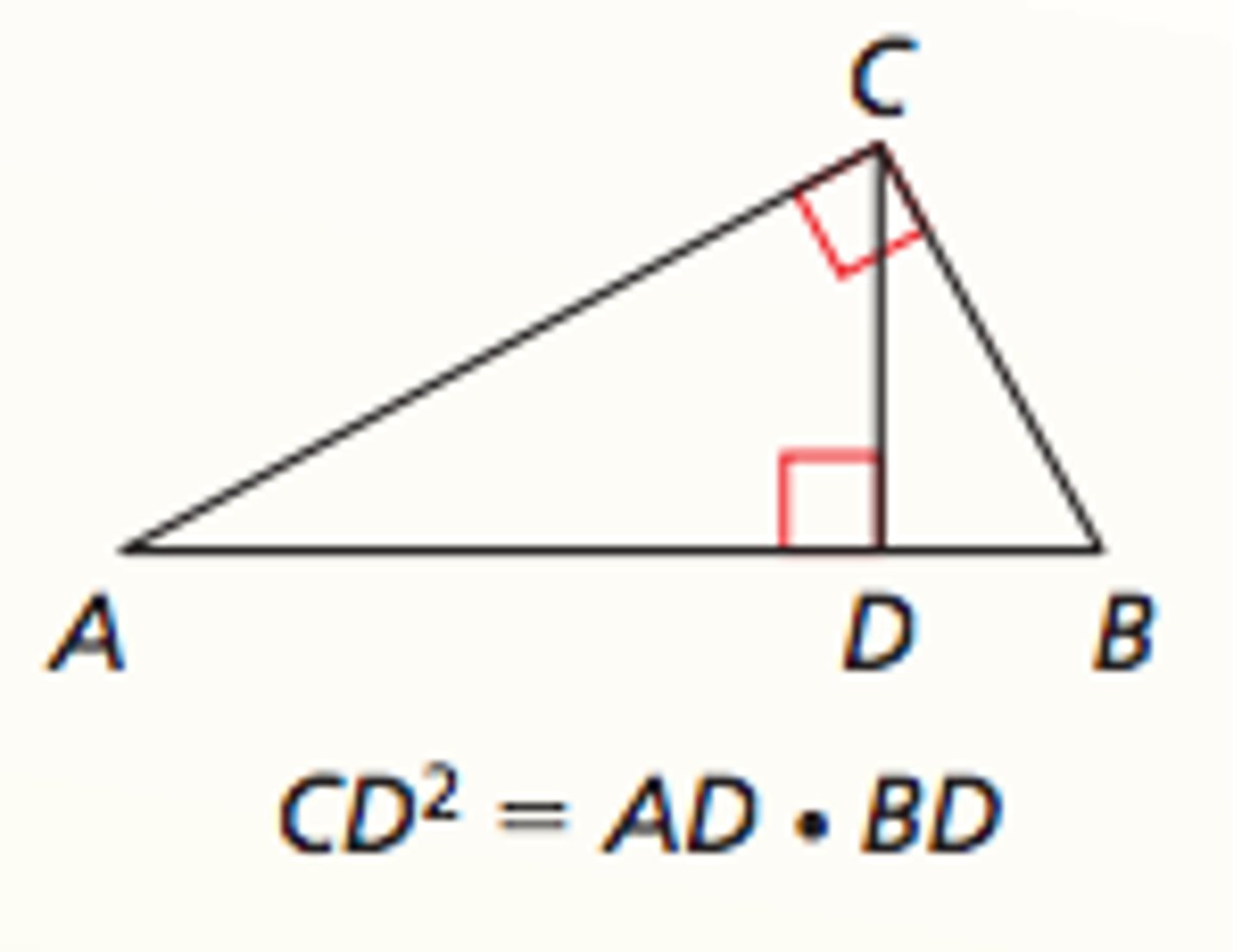
geometric mean (Leg) Theorem
In a right triangle, the altitude from the right angle to the hypotenuse divides the hypotenuse into two segments. The length of each leg of the right triangle is the geometric mean of the lengths of the hypotenuse and the segment of the hypotenuse that is adjacent to the leg.
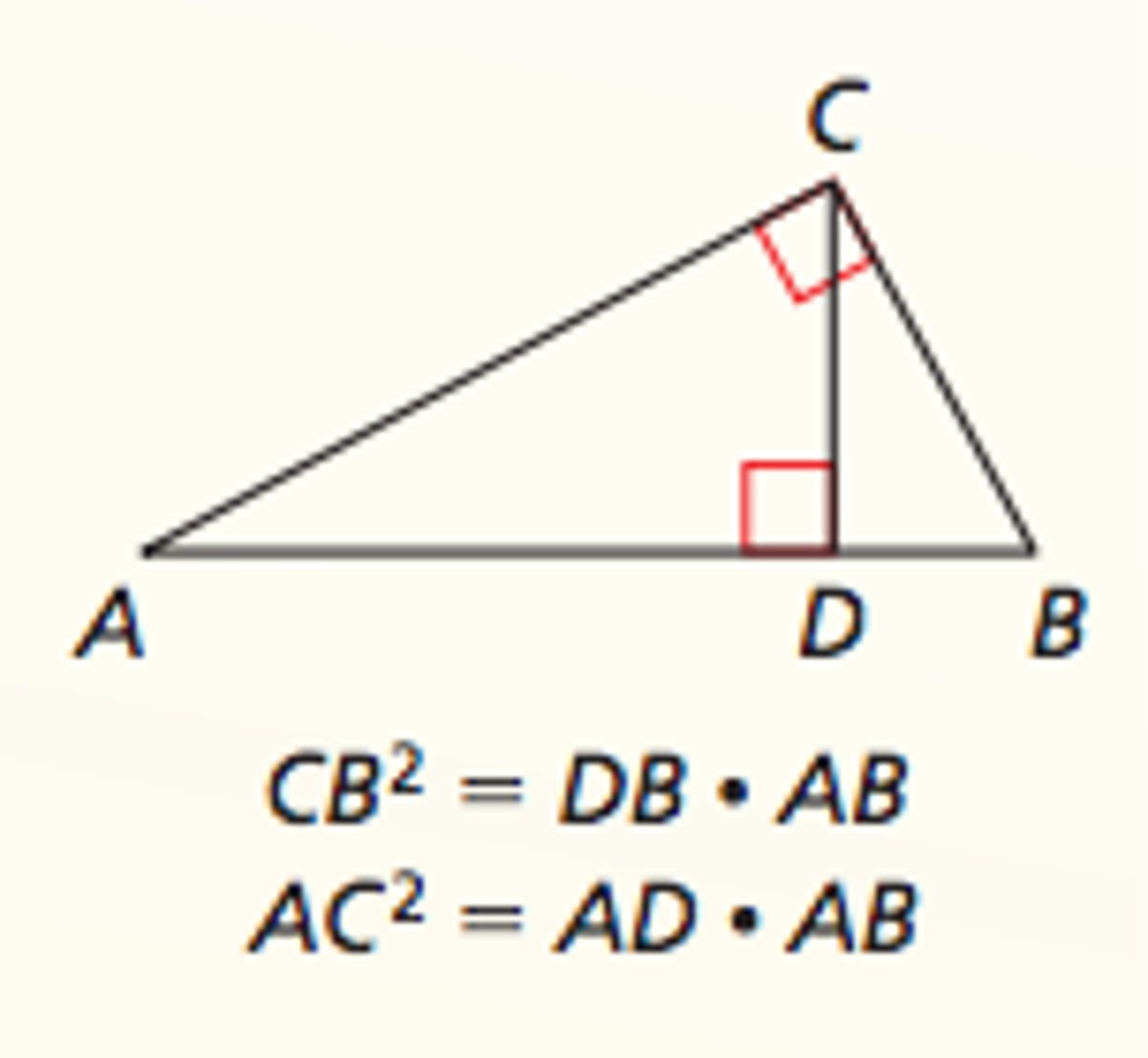
Tangent Ratio
Let Triangle ABC be a right triangle with acute angle A. The tangent of angle A (written as tan A) is defined as follows:
tan A = Length of leg opposite angle A/ Length of leg adjacent to angle A = BC/AC.
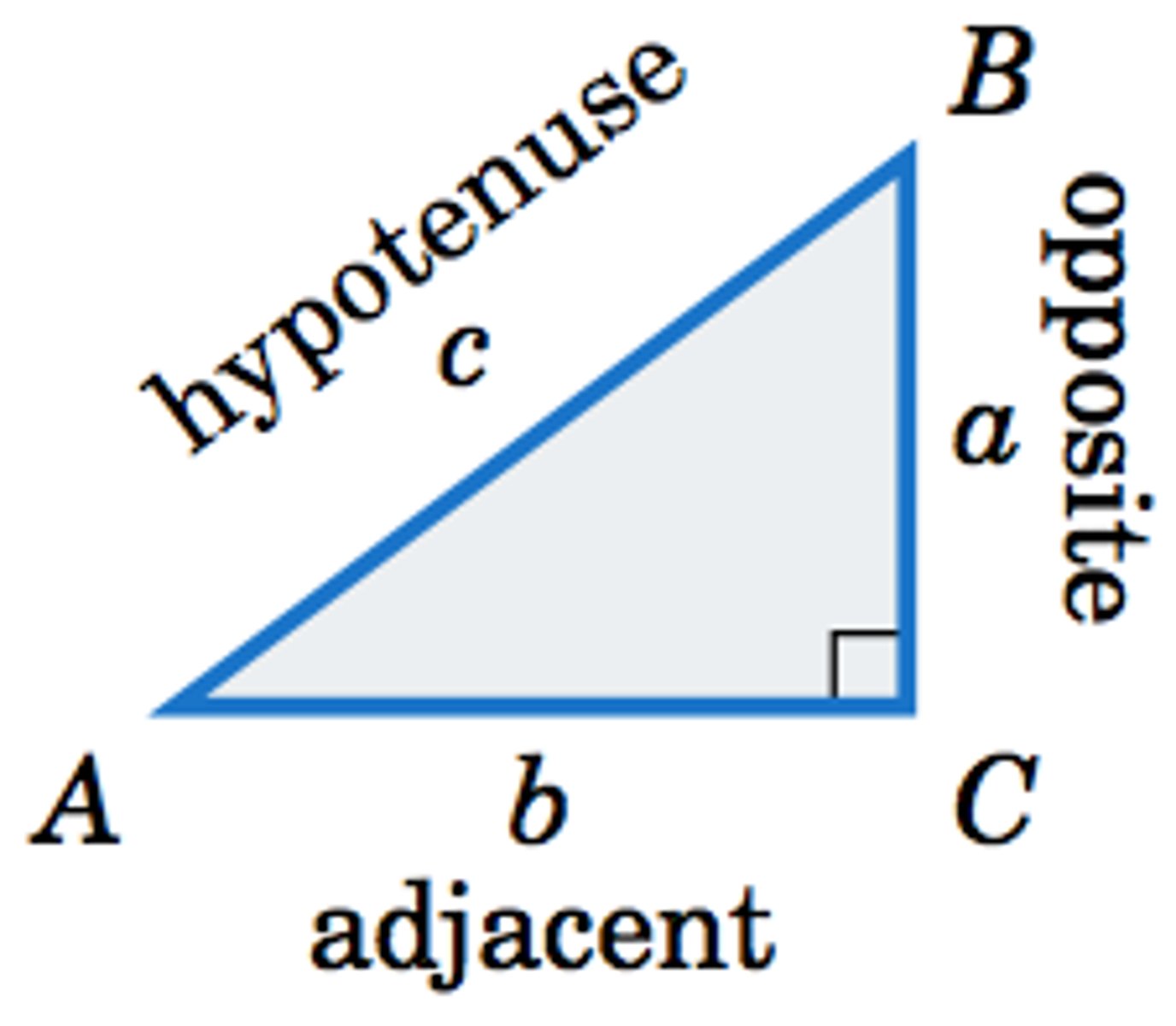
sine and Cosine Ratios
Let triangle ABC be a right triangle with acute ∠ A. The sine of ∠ A and cosine of ∠ A (written as sin A and cos A) are defined as follows:
sin A = length of leg opp. ∠ A / length of hypotenuse = BC/AB
cos A = length of leg adj. ∠ A / length of hypotenuse = AC/AB
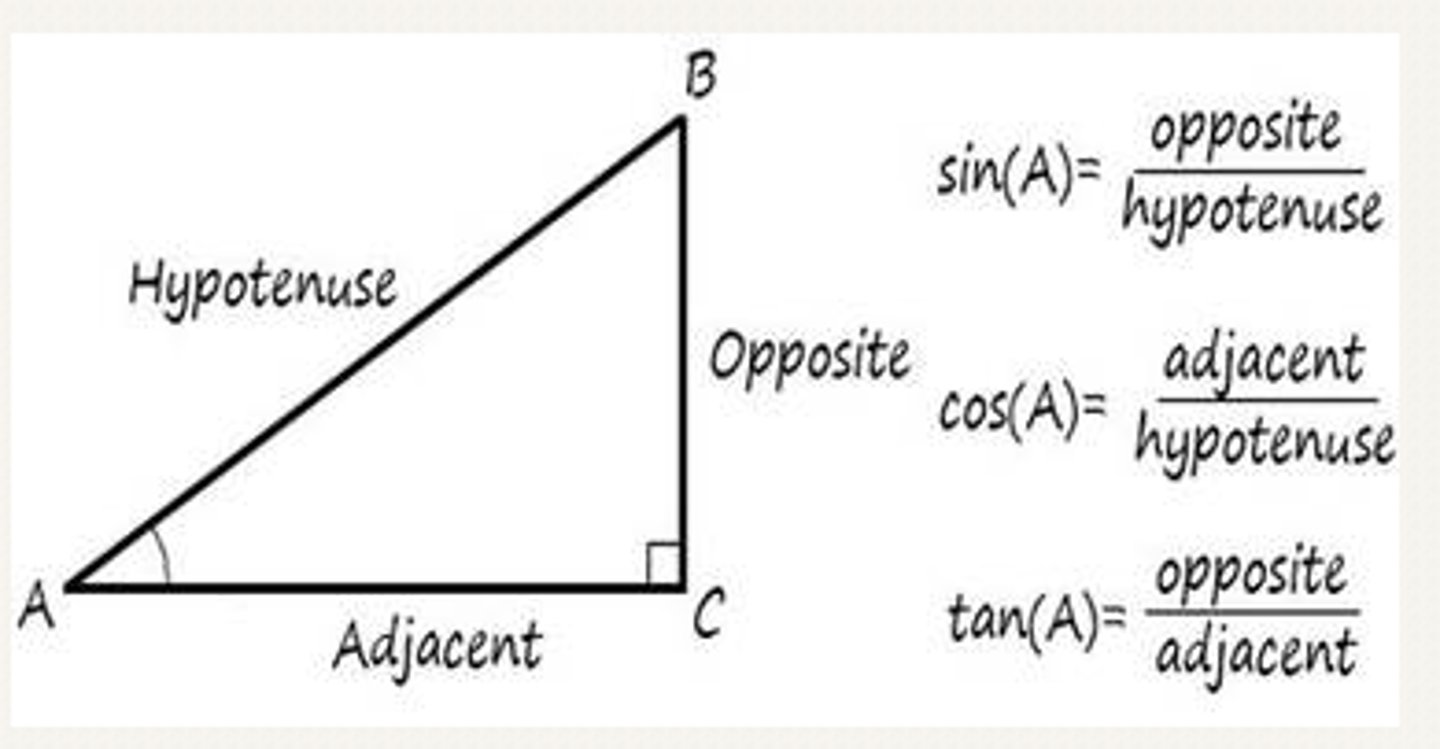
sine and Cosine of Complementary Angles
The sine of an acute angle is equal to the cosine of its complement. The cosine of an acute angle is equal to the sine of its complement.

Inverse Trigonometric Ratios

Solving a Right Triangle
To a solve a right triangle means to find all unknown side lengths and angle measures. You can solve a right triangle when you know either of the following:
- two side lengths
- one side length and the measure of one acute angle

Area of a Triangle
The area of any triangle is given by one-half the product of the lengths of two sides times the sine of their included angle. For triangle ABC shown, there are three ways to calculate the area.
Area=(1/2)bc sin A
Area=(1/2)ac sin B
Area=(1/2)ab sin C

Law of Sines
sinA/a=sinB/b=sinC/c or a/sinA=b/sinB=c/sinC
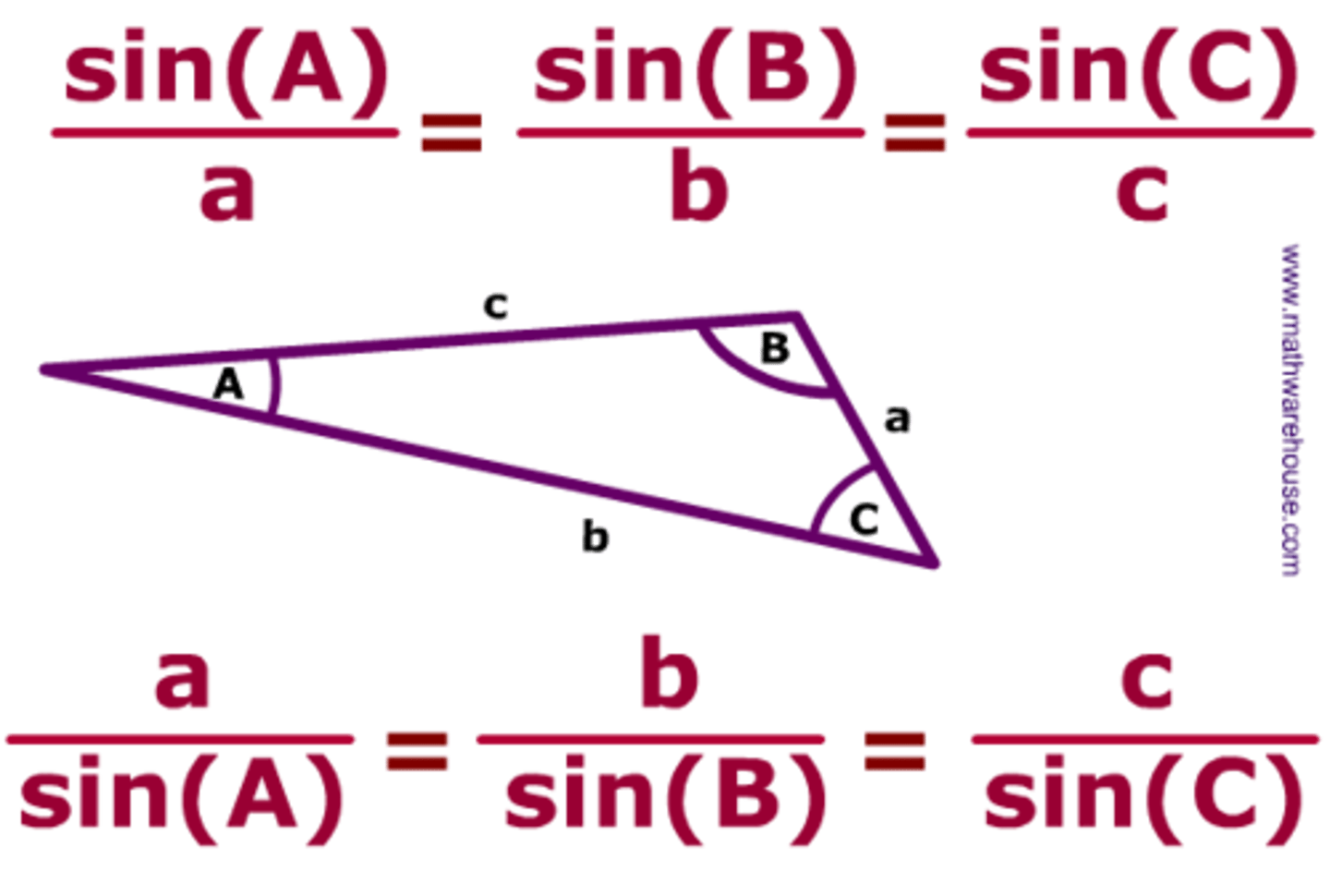
Ambiguous Case
After using Law of Sines, check to see if the angles and legs match up; if they don't find the supplement of the angle, then use Triangle Sum Theorem to calculate the correct angle measure.
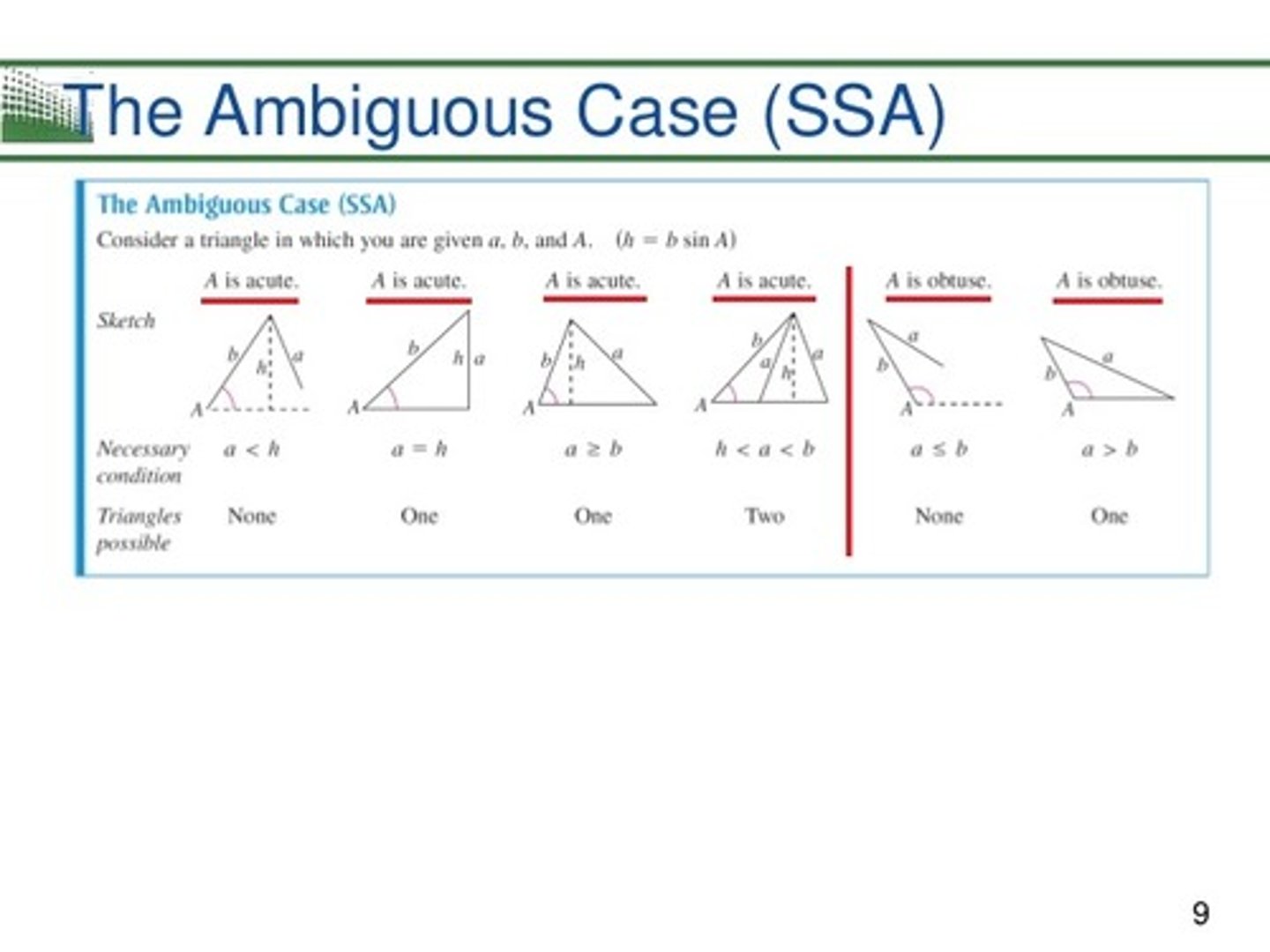
Ambiguous Case Typical Triangles
occurs when one uses the law of sines to determine missing measures of a triangle when given two sides and an angle opposite one of those angles (SSA).
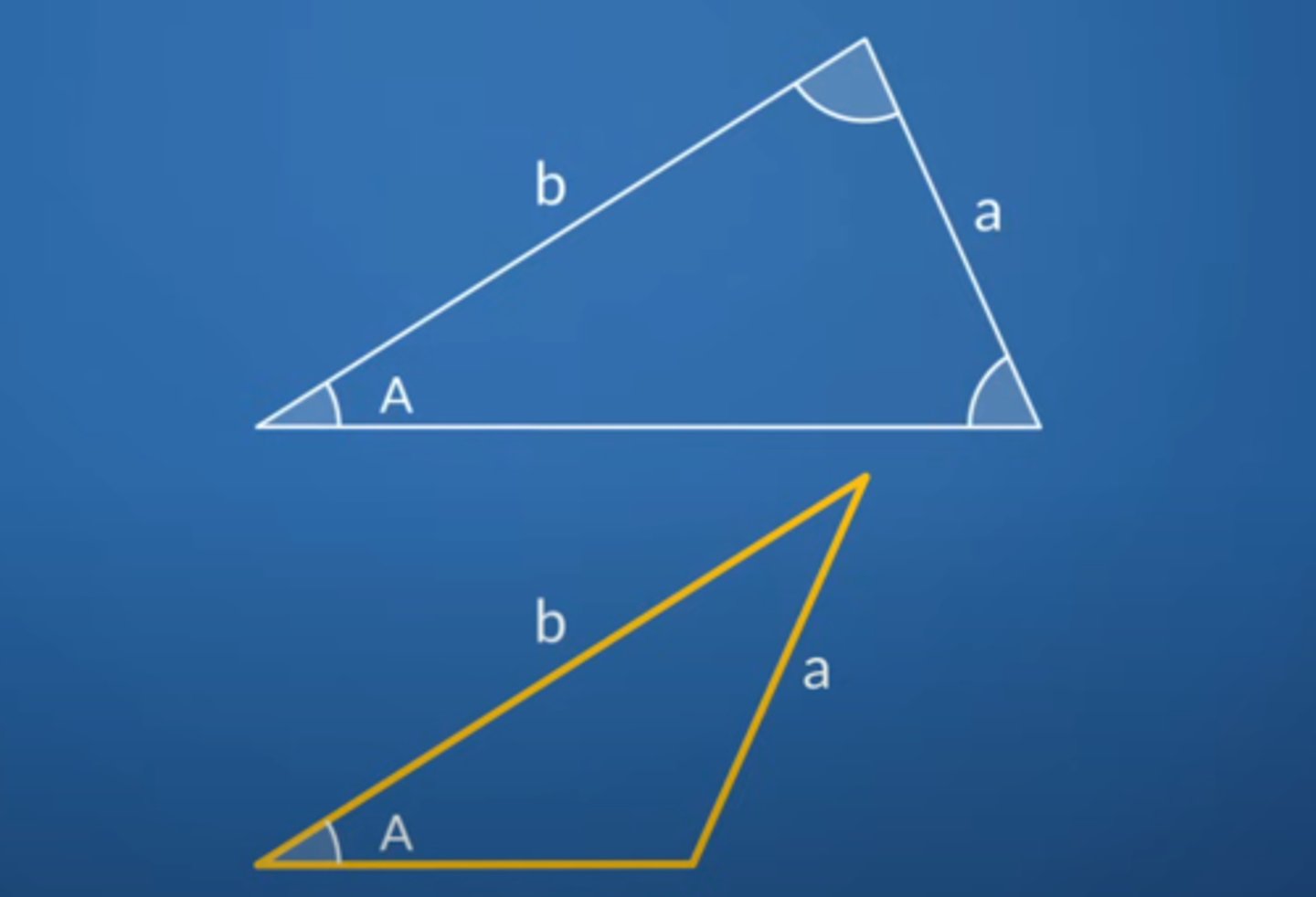
Law of Cosines
If triangle ABC has sides of length a, b, and c, as shown, then the following are true:
a² = b² + c² -2bc * cos A
b² = a² + c² -2ac * cos B
c² = a² + b² -2ab * cos C
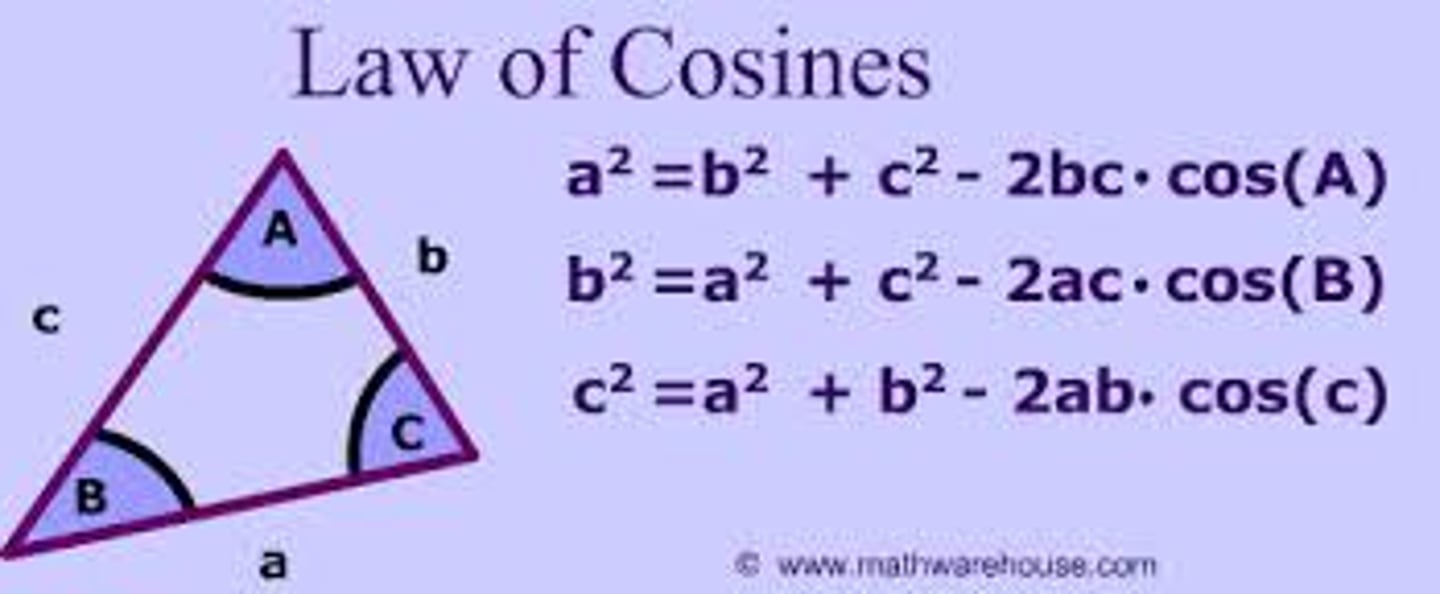
Types of Law of Sine Triangles
SSA, AAS, ASA
Types of Law of Cosine Triangles
SAS, SSS
Adjacent arcs
Arcs of a circle that have exactly one point in common

Center of a circle
The point from which all points on a circle are equidistant
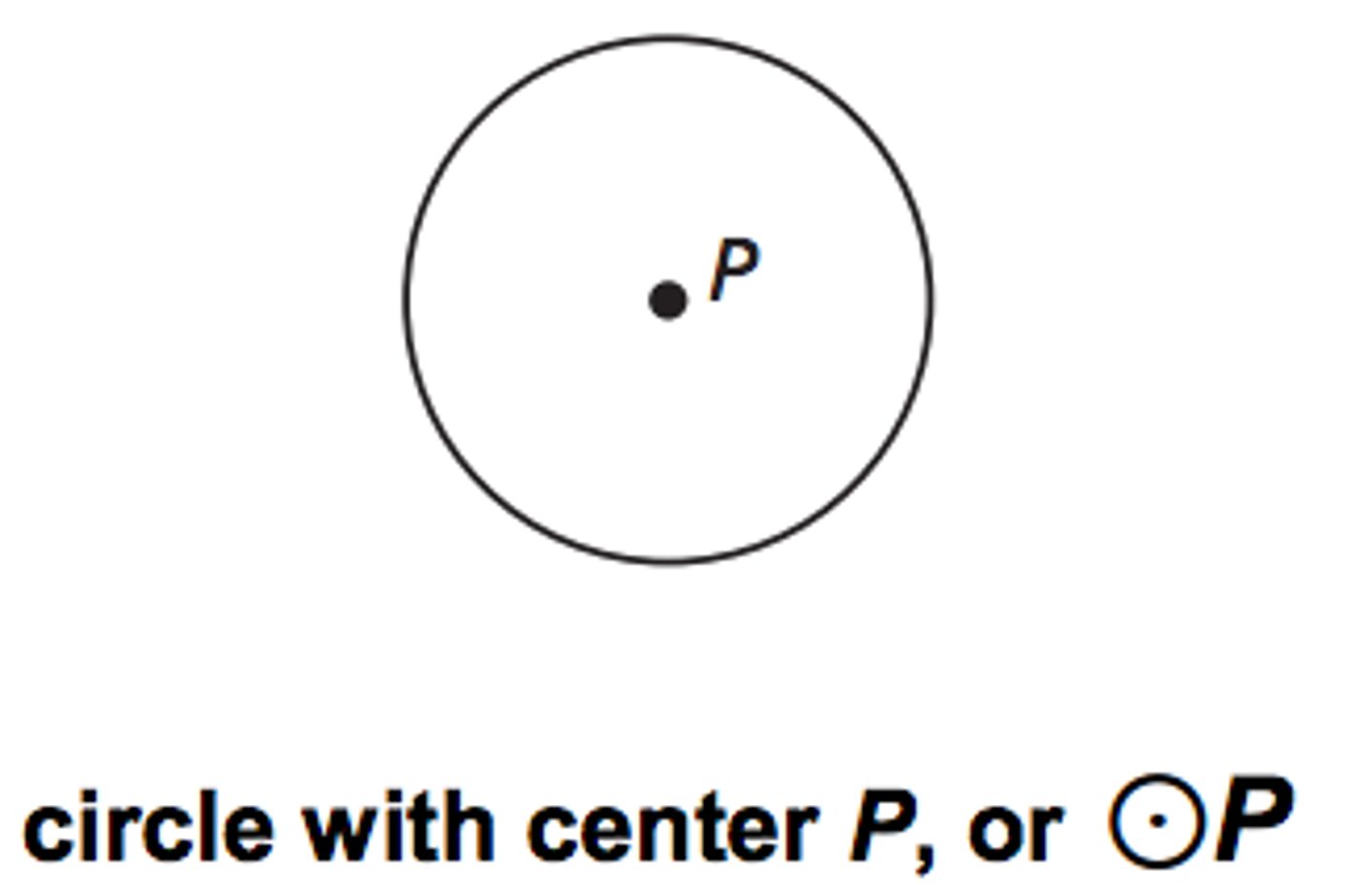
Central angle of a circle
An angle whose vertex is the center of a circle
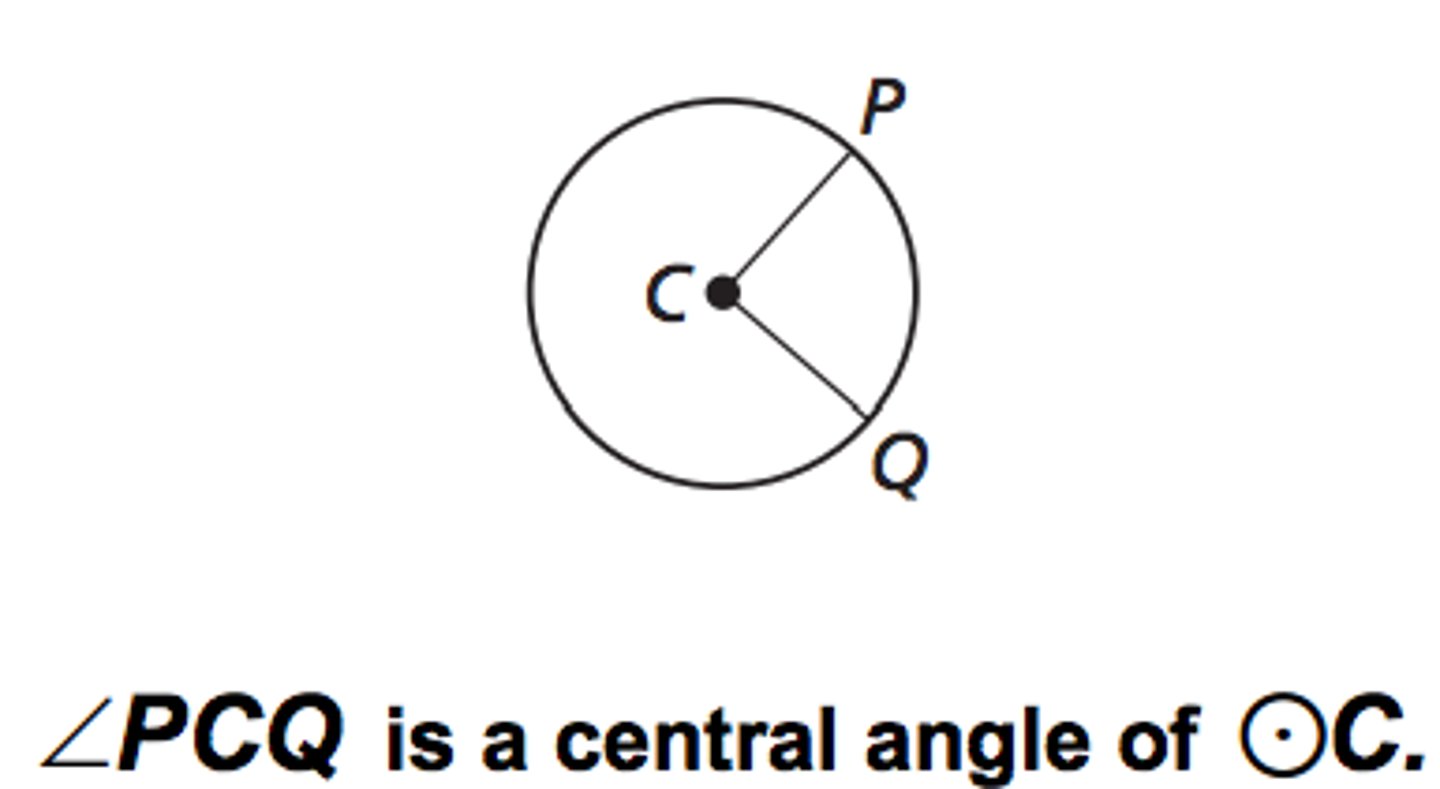
Chord of a circle
A segment whose endpoints are on a circle
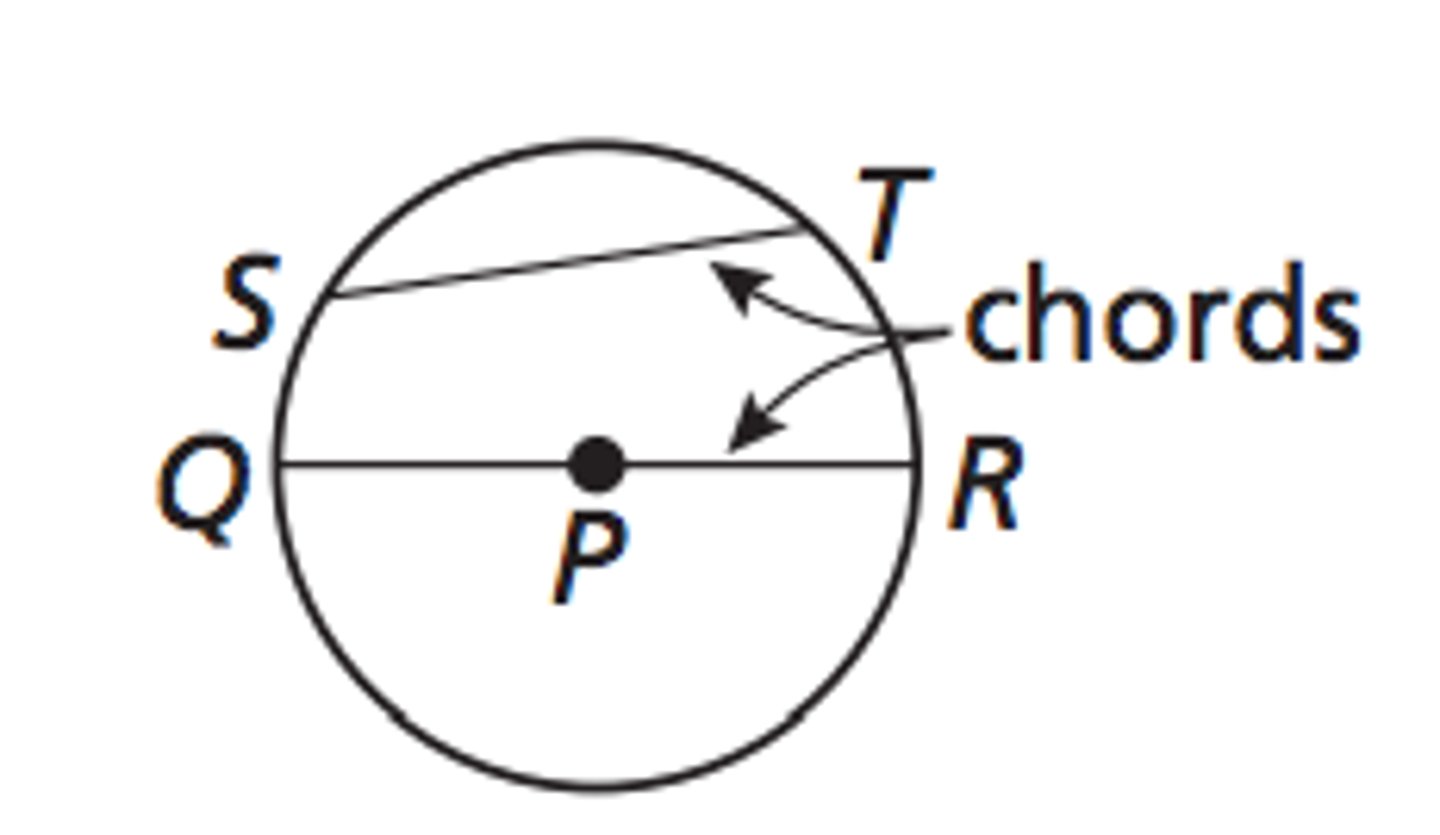
Circle
The set of all points in a plane that are equidistant from a given point
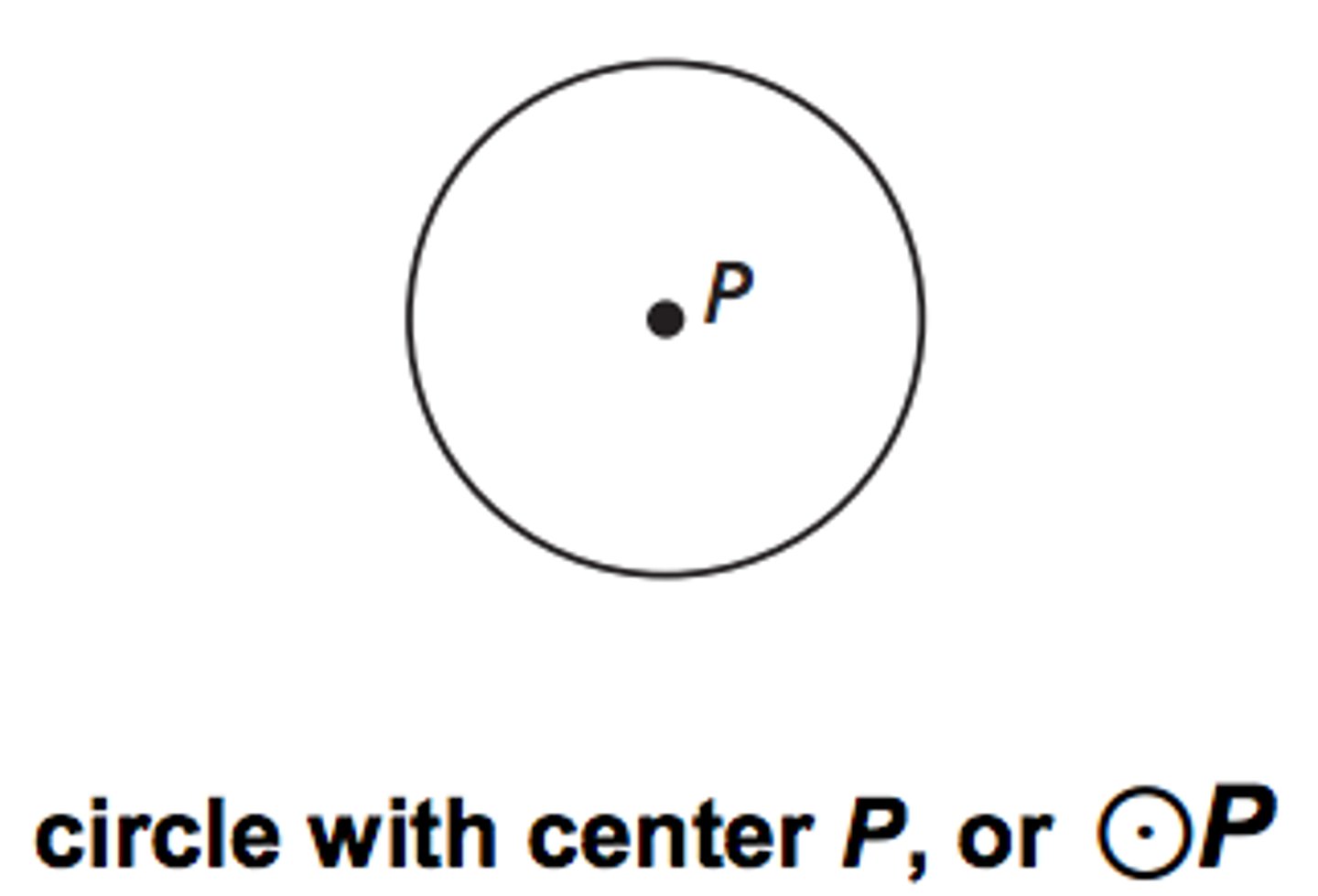
Circumscribed angle
An angle whose sides are tangent to a circle

Circumscribed circle
A circle that contains all the vertices of an
inscribed polygon

Common tangent
A line or segment that is tangent to two coplanar circles
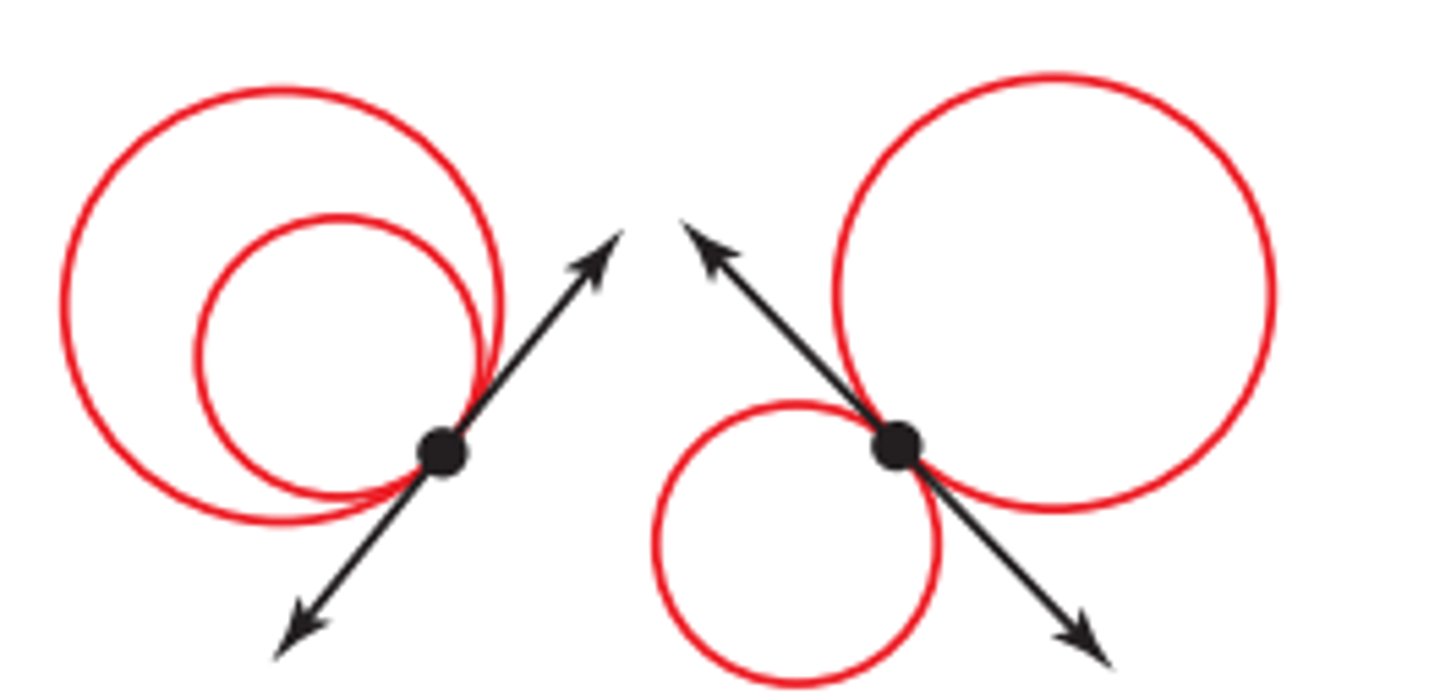
Concentric circles
Coplanar circles that have a common center
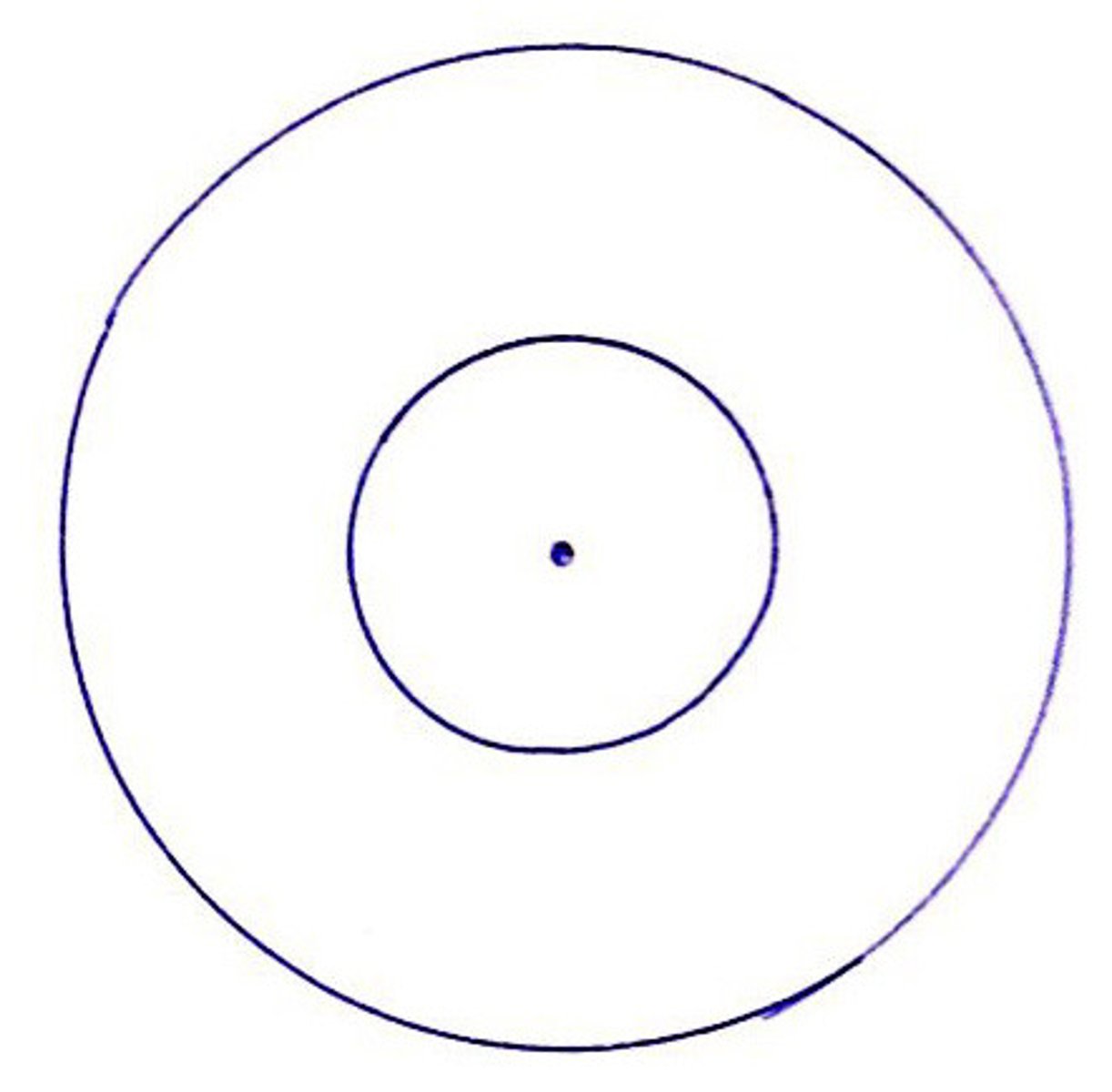
Congruent arcs
Arcs that have the same measure and arc of the same circle or of congruent circles
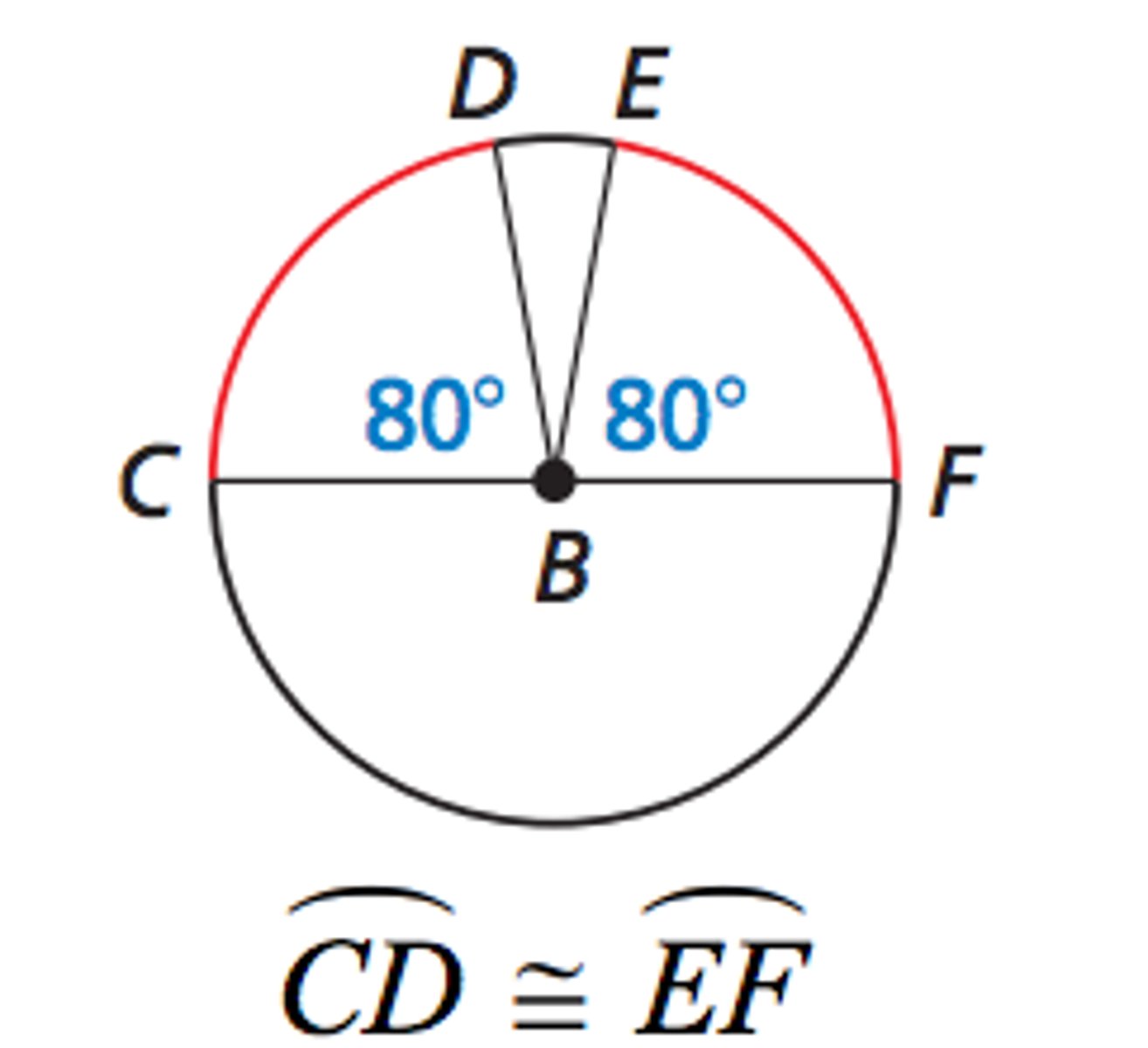
Congruent circles
Circles that can be mapped onto each other by a rigid motion or a composition of rigid motions
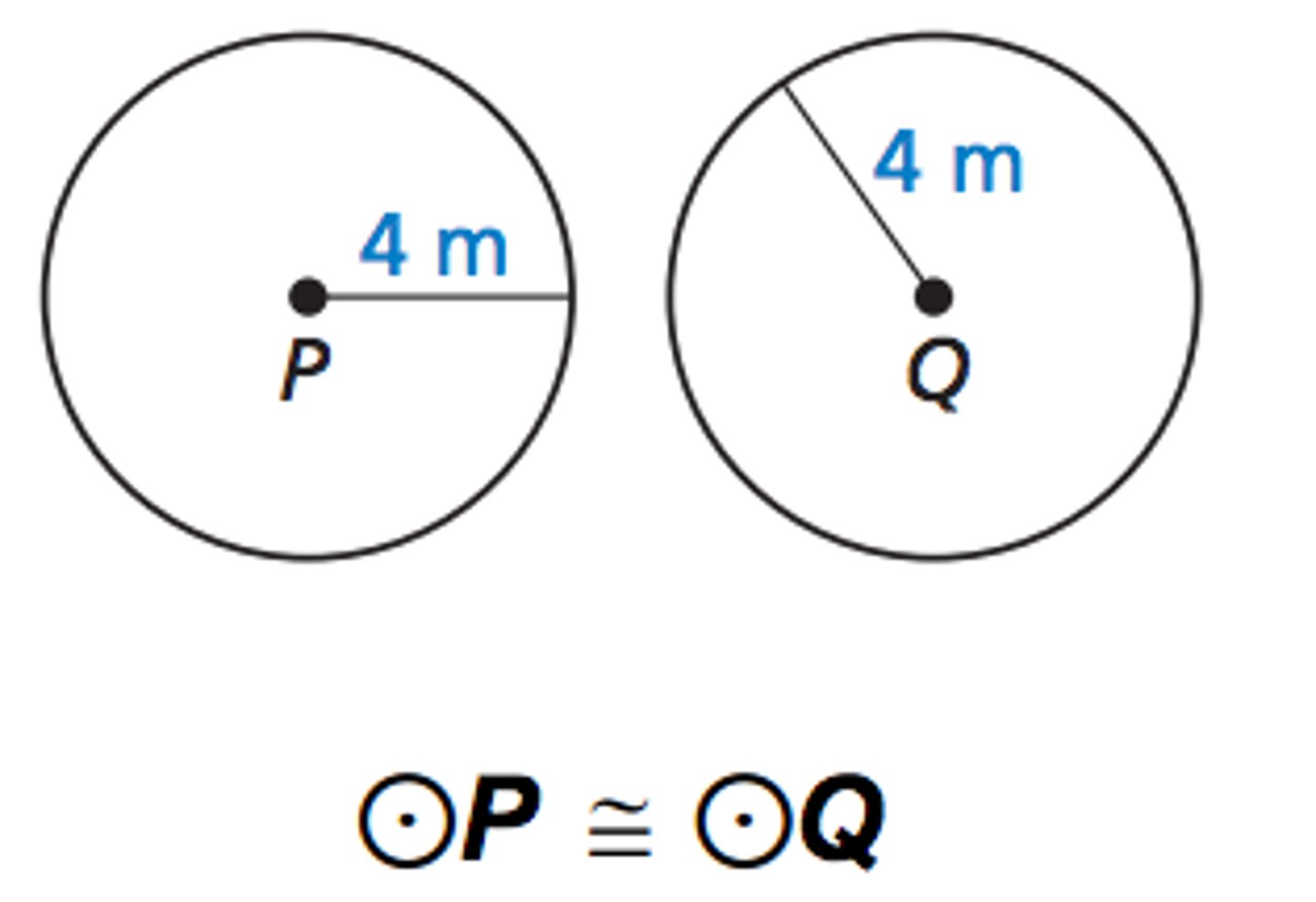
Diameter
A chord that contains the center of a circle
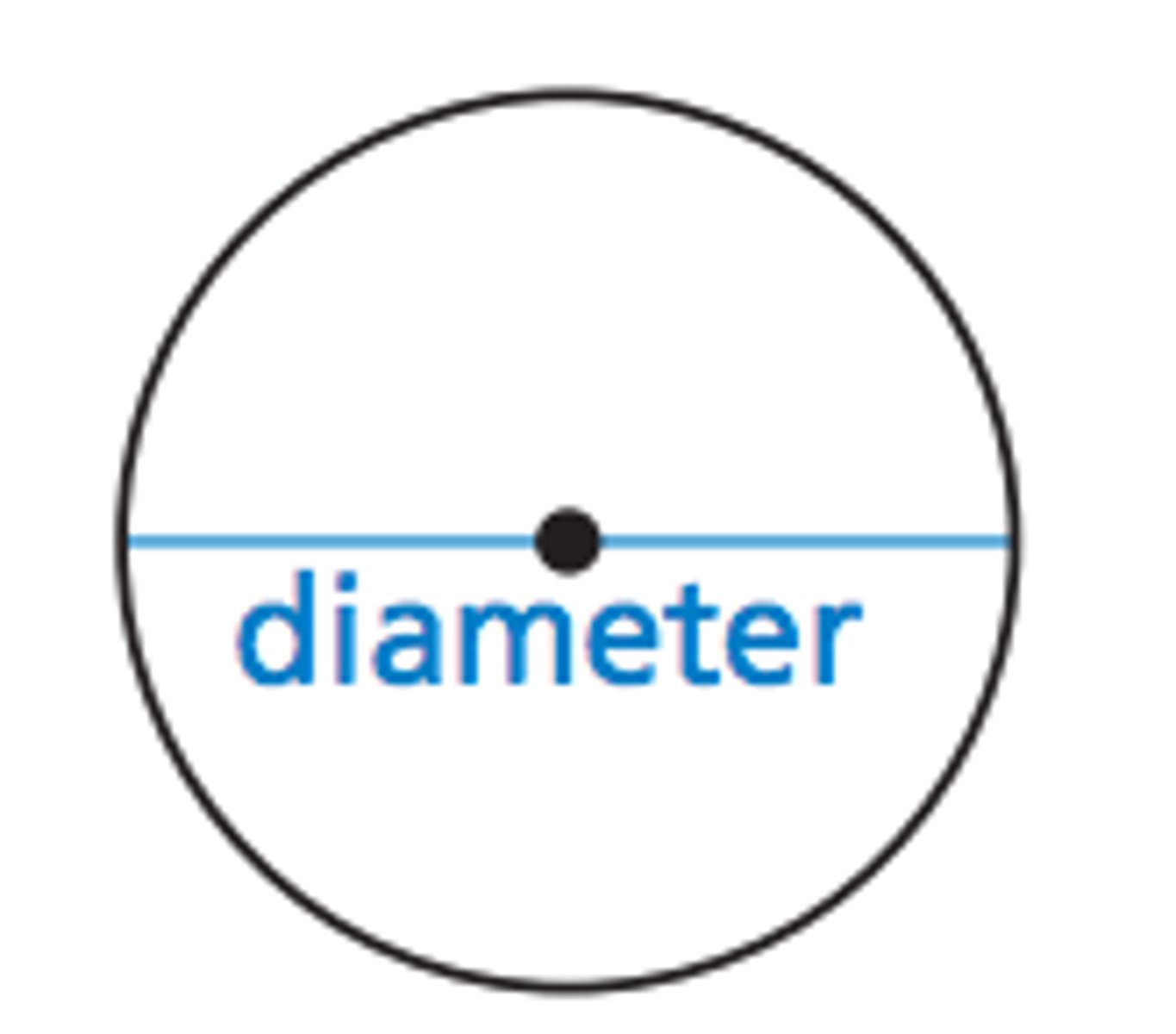
External segment
The part of a secant segment that is outside the circle

Inscribed angle
An angle whose vertex is on a circle and whose sides contain chords of the circle
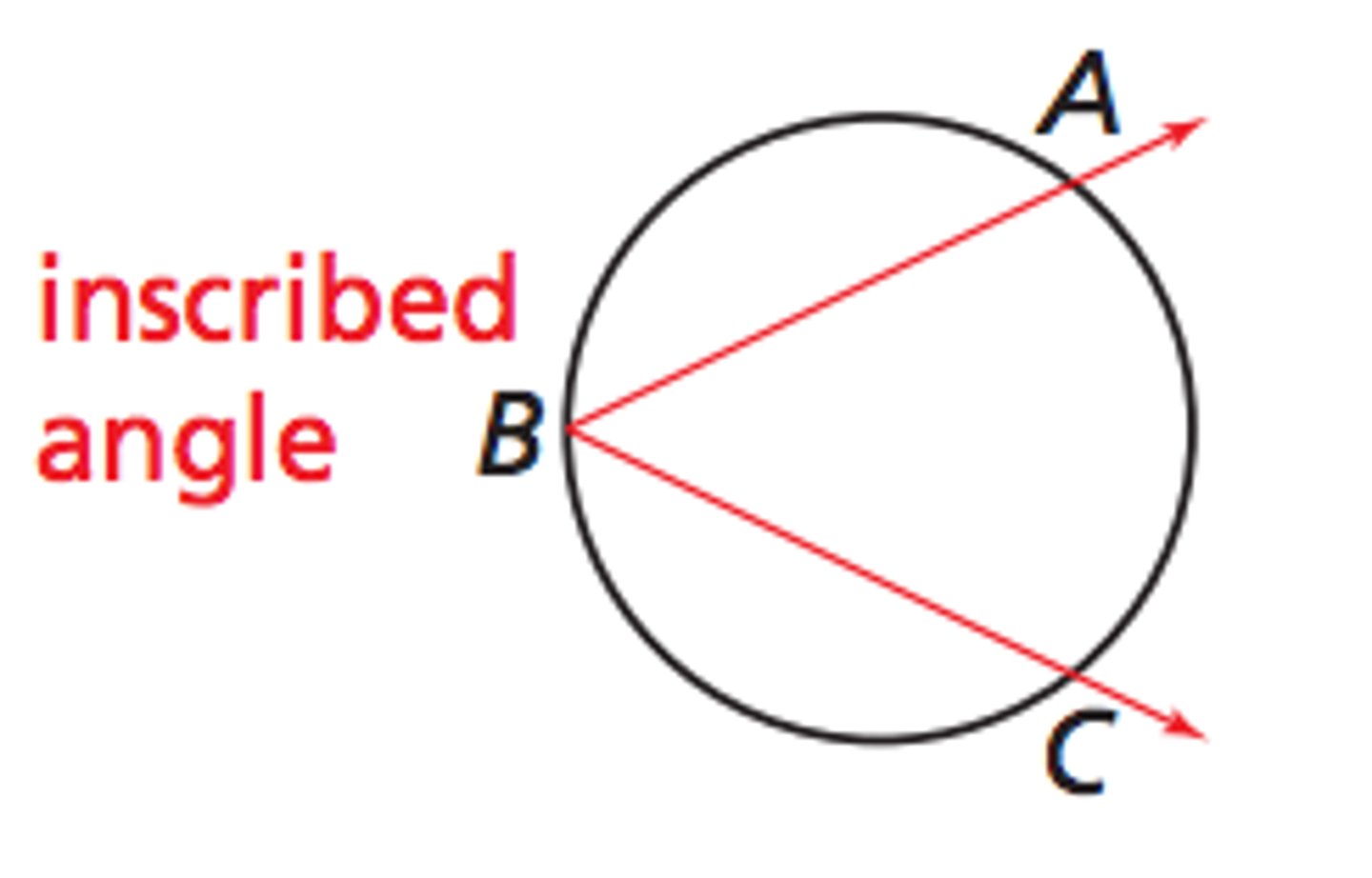
Inscribed polygon
A polygon in which all of the vertices lie on a circle

Intercepted arc
An arc that lies between two lines, rays, or
segments
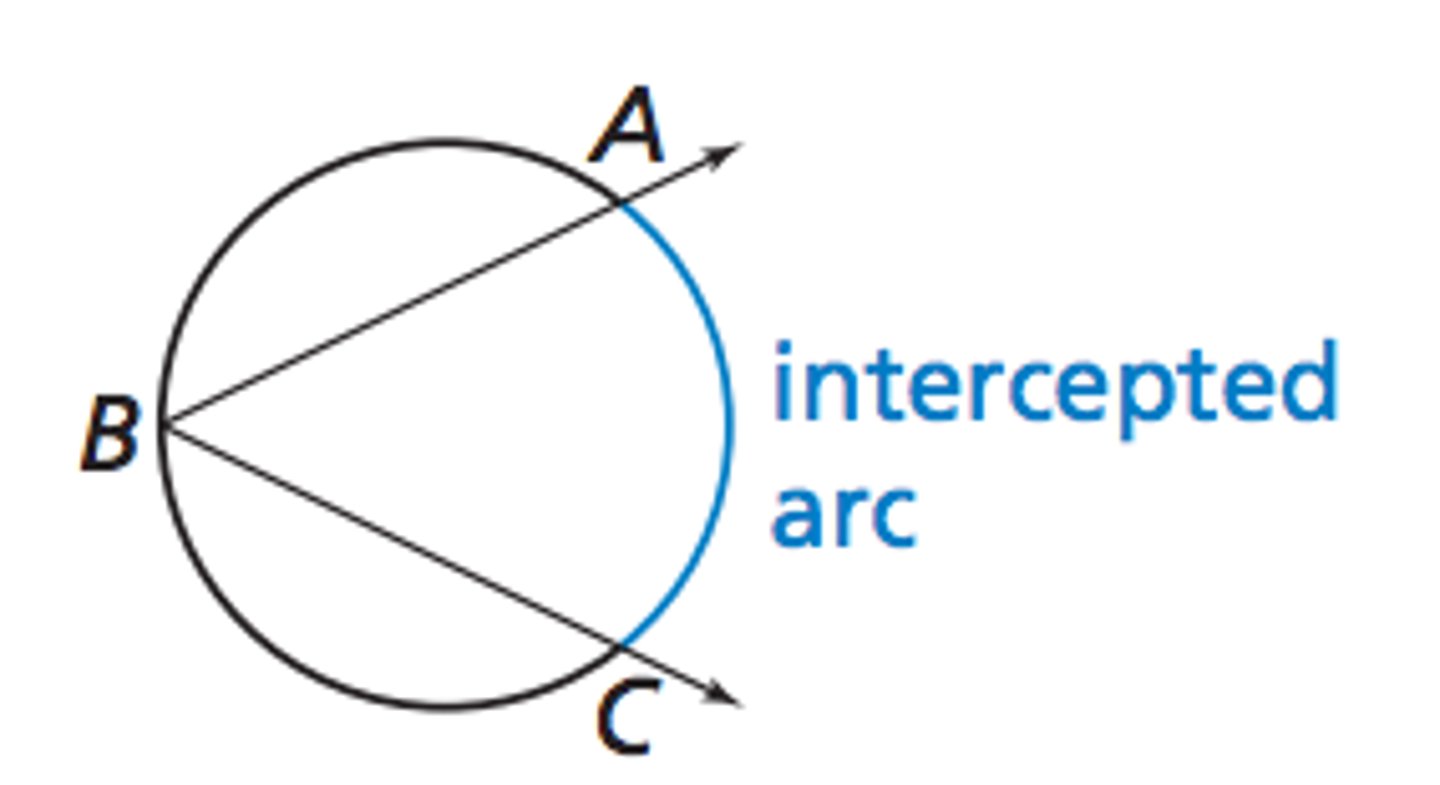
Major arc
An arc with a measure greater than 180°
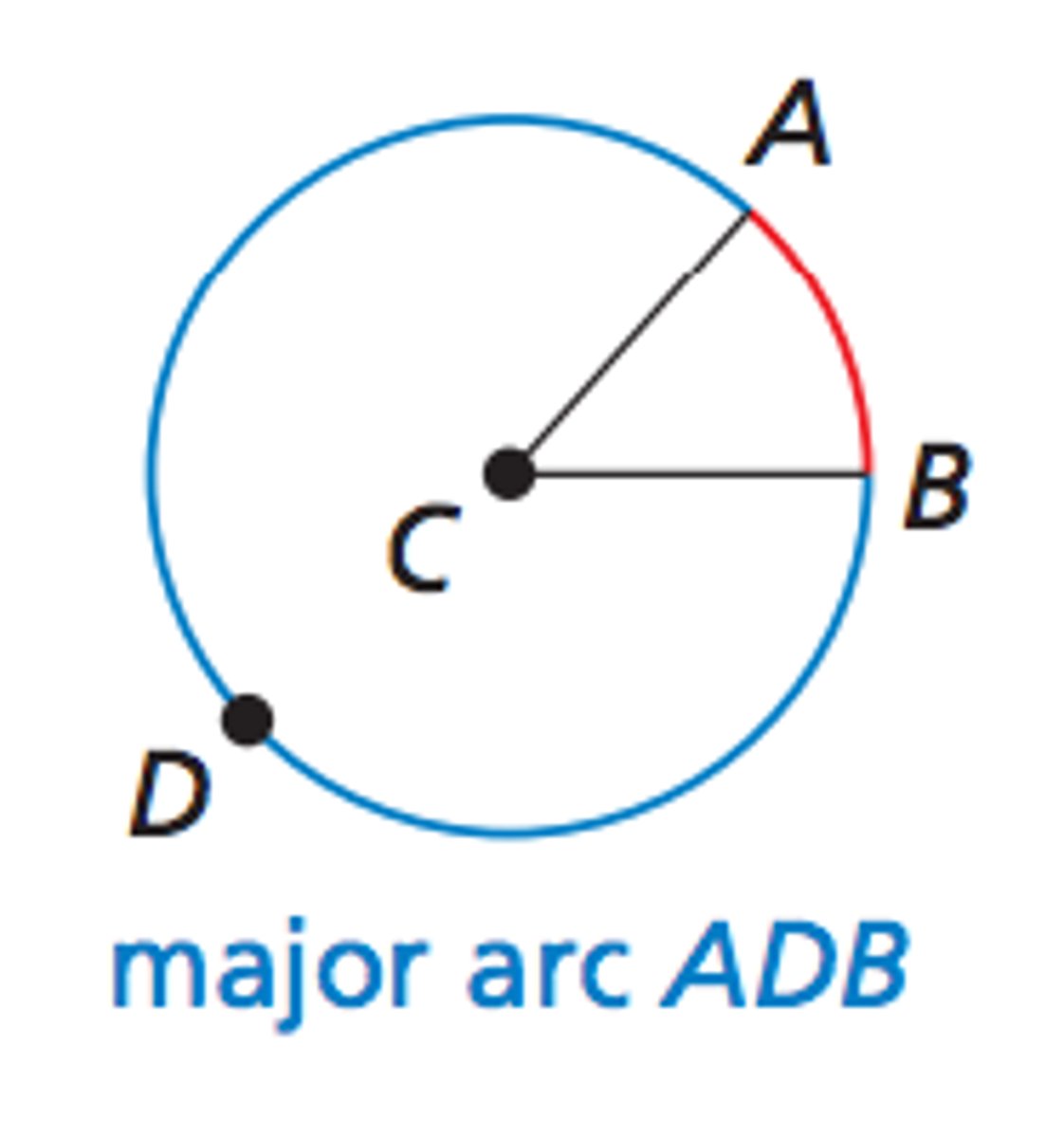
Measure of a major arc
The measure of a major arc's central angle
